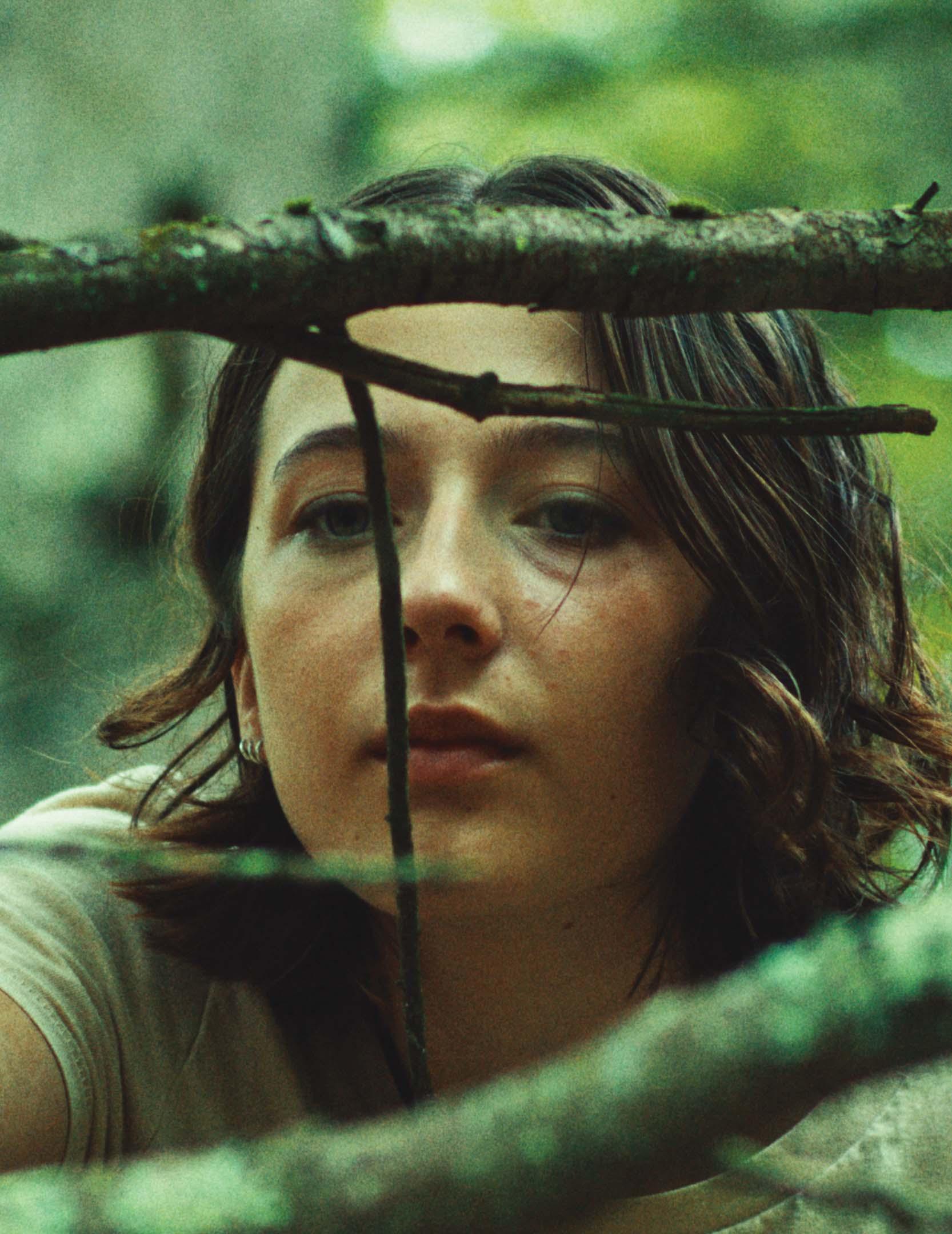
By the time


By the time
movies and TV shows we love appear on
screens, they ’ve passed through an enormous ecosystem of influences. Nothing in Hollywood just happens. Costume designers researched and constructed outfits to set the scene and help the actors get into character. Artists studied the culture portrayed in that hot new animated series to get it right, and publicists spent hundreds of hours building buzz, which is why you might know about it—and maybe even buy lipstick with the show’s branding. This issue of Hue is about the FIT alums who make and support the entertainment you can’t turn away from. So check out our issue, and then look once again at Hollywood. As our cover suggests, we’ve been there all along.





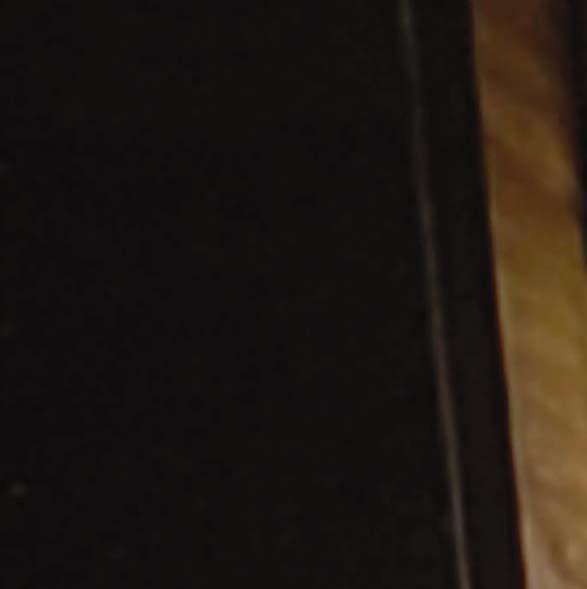
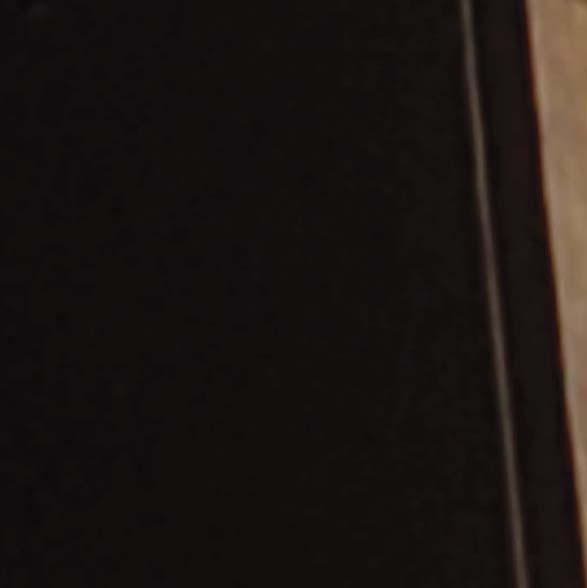
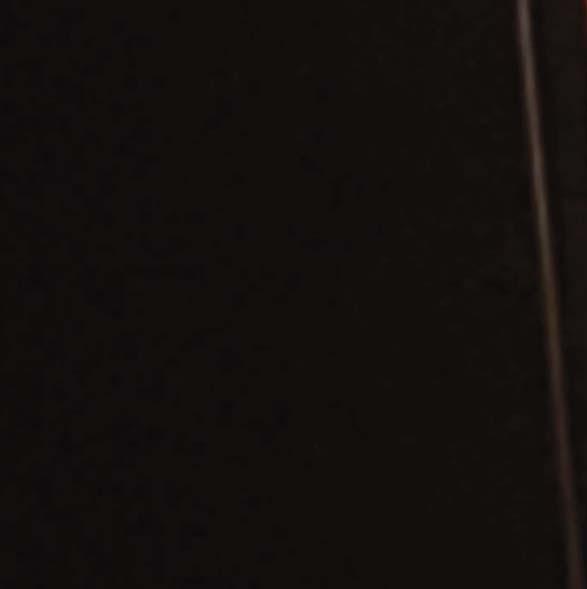
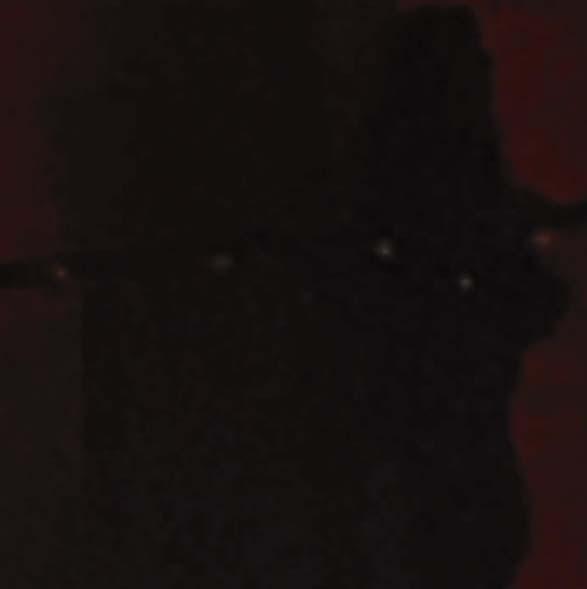
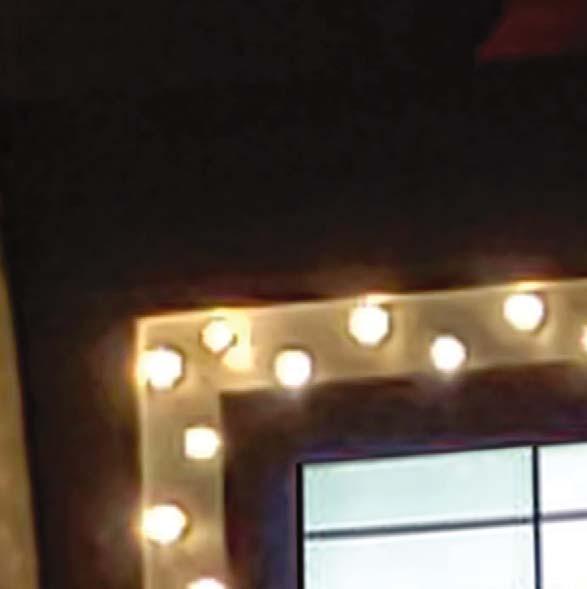






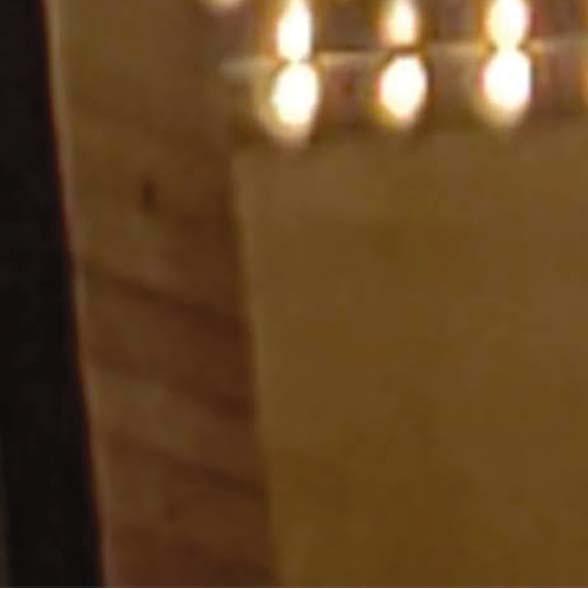









































E





































































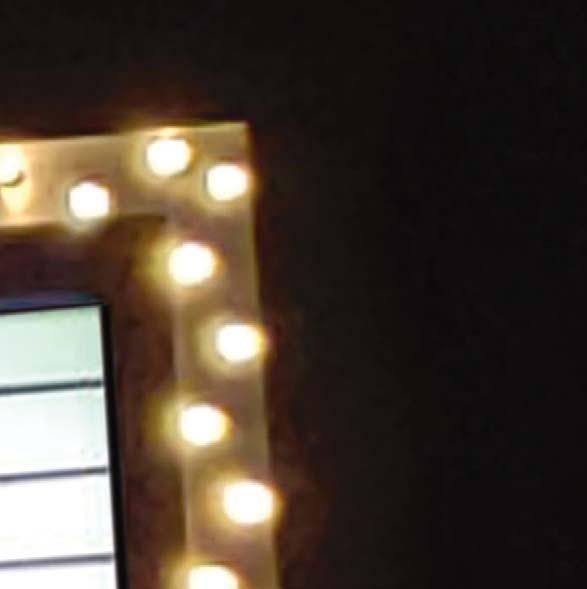
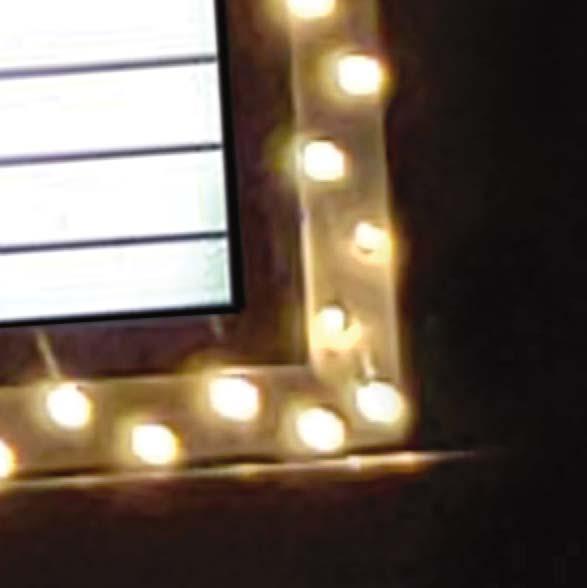

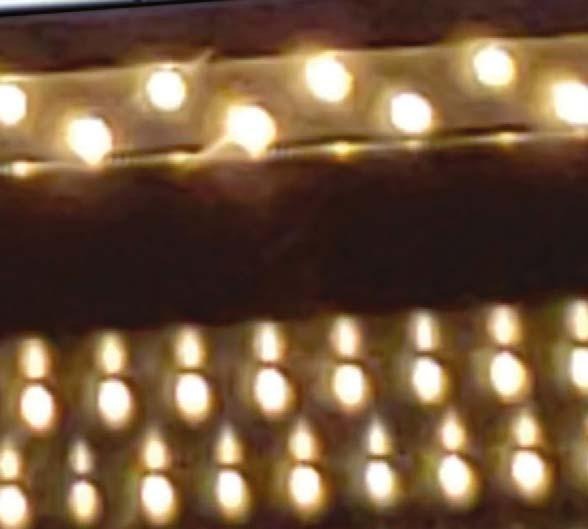

You can tell a lot about a place from the way it shows up in the culture, and references to the college appear everywhere—in movies, on TV, in books and even songs. Scattered throughout this issue, you’ll find mentions like the one at right. In aggregate, they tell us that “FIT” is a code word for cool among ambitious creatives. Know some we missed? Email us at hue@fitnyc.edu.

In Jenny Livingston’s influential 1990 doc about the ball scene, drag legend Willi Ninja name-checks FIT in a list of places he’s taught models to walk. Did Ninja work at FIT, or even attend? Possibly.

BY ALEX JOSEPH
Part hands-on filmmaking, part film history and theory, and all industry-savvy, FIT’s Film and Media program launched 10 years ago, offering distinctive AAS and BS degrees. The department provides an affordable alternative to other film programs, and welcomes a more diverse crop of students. Alumni have become video archivists, editors, producers of various media and, yes, filmmakers, each with a unique perspective. “It’s very important that students find their own voice,” says Dahlia Schweitzer, department chair. The program hasn’t produced an Ava DuVernay or Steven Spielberg (yet!), but grads are working with top filmmakers and studios.
To commemorate the anniversary, we’re featuring faculty and notable alumni of the program.
After becoming chair in 2023, Schweitzer updated course offerings, adding classes on drag and cross-dressing, guerilla filmmaking, and television history. (She’s taught in the department since 2019.) She earned a PhD in cinema and media studies at UCLA and has published academic books about haunted houses, L.A. detectives, and artist Cindy Sherman’s 1997 horror film, Office Killer. “I write for the same reason I watch movies and television,” Schweitzer says, “to help me understand the world.” Gender, race, and sexuality provide lenses for close readings. Her well-timed 2018 book, Going Viral (Rutgers), for example, looked at narratives of contagion such as 28 Days Later (2002) for clues about social bias: After the 9/11 terrorist attacks, she says, viruses in films frequently came from the Middle East. The topics may be gruesome— Schweitzer recently provided commentary for a Fox docuseries about convicted murderers the Menendez Brothers—but her true goal is to prompt critical engagement, she says. “My aim is to pass on my own curiosity to my students and encourage them to create intellectual connections between the material of a particular course and the world in which they live.”


In spring 2024, when Vanity Fair published a list of the best true-crime documentaries, it included two films directed by Koury, who has taught at FIT since 2016. Voyeur (2017), distributed by Netflix, investigates a contested New Yorker magazine story about a bizarre motel owner; Koury’s other entry, two episodes of HBO’s I’ll Be Gone in the Dark, follows a writer investigating the Golden State serial killer. “I wouldn’t put myself in a category,” Koury says of his body of work, which includes a film about Harry Potter fanatics and a still-developing project about a TV station run by prison inmates.
“Whatever grabs me is where I go.” With Schweitzer as resident film theorist, Koury, the working filmmaker, supports the department with production expertise. His own process guides his pedagogy. Starting in their first semester, students must complete a film of their own every term, a challenge that exposes them to the full range of film work. Koury is most interested in helping students realize their individual potential as artists, a word he views expansively. “I think commercial work is art,” Koury says. “Cinematography is art. There's incredible artistry in editing.”
One of Grossbach’s first assignments in the FIT program was to scrutinize Alfred Hitchcock’s Rear Window (1954). “We had to list every single shot in the film—wide, tight, medium, close-up,” she says. This painstaking attention to detail has served her as a freelance archival researcher. Today, a director might tell Grossbach, “I want a tight shot of a man drinking a beer.” For Hulu’s Thank You, Good Night: The Bon Jovi Story (2024), she pored over 20,000 stills and 100 hours of footage. She also worked on Netflix’s Simone Biles Rising and

a forthcoming HBO series about baseball celeb Alex Rodriguez. Before FIT, Grossbach thought she might work on narrative fiction films, but an early experience of making a short one for Koury set her straight. “He said, ‘What is this? Why aren’t you making docs? That’s what you’re best at,’” Grossbach says. “I loved how honest he was.” And she’s been faithful to her passion for documentaries since. She hopes her role as associate producer for a still-developing project about Lady Gaga and Tony Bennett heralds her future. She loves shaping narrative. “At FIT, I learned to look for moments,” she says. “Is this shot moving the story forward? If it’s not, it’s not important. I want to serve a story.”
In a sketch from Benfield’s animated video series Space Skits, a vulture in a desert refuses to share his drinking straw with a man dying of thirst. “I’m the worst germaphobe, really,” the bird explains. “Ask any of my friends!” Space Skits also features a traffic-stopping moose, a flirty toucan, and a shark on a date that goes way, way wrong. The six-year-old channel of 25to 40-second sketches has over a million followers on TikTok and 630,000 on Instagram. It all started at FIT, when a class in After Effects software showed Benfield how to animate drawings he created in Illustrator. Immediately, the aspiring comic writer saw the opportunity to share his talents online. The key was consistency: He challenged himself to deliver a short in the same punchy, deadpan style every week. The routine paid off in followers, and soon the industry noticed. A talent manager reached out on LinkedIn. Placements on the Funny or Die website and sketches for the Adult Swim arm of Cartoon Network followed, as well as support from Emmy-winning animation studio Bento Box. An even more


tantalizing possibility is in the offing; in the meantime, Benfield supports himself with sponsored posts for an AI program and a male grooming device. “I thought it would hurt my soul to make them, but it’s pretty fun, actually,” he says. Asked for the secret of how to be funny, Benfield shrugs. When faced with the blank page, he has certain go-to themes— like animals. He says, “There’s just something about a deer selling sandwiches that’s funny.”
When the 2024 Oscar nominations were announced, Willers was overjoyed. Martin Scorsese’s Killers of the Flower Moon, for which Willers worked as the assistant to the executive producer and researcher, received 10. After the eight-month shoot in Oklahoma, Willers became the archivist for Scorsese’s personal video collection. She’s currently on a project with Elara Pictures, the production company best known for the Adam Sandler film Uncut Gems. “Marty taught me that you always have to be open and learning,” she said. “Filmmaking isn’t some magic; it’s about curiosity.”

Whether they know it or not, most prospective FIT students have seen Mun’s work. He’s been making videos for the college for several years, including his admissions film, called “Only at FIT”; a post-Covid short called “What Makes You Optimistic Now?”, and a personal animated piece about the American Dream. He’s also a successful commercial filmmaker and motion designer, working on projects across the automotive, beauty, and food retail sectors for Constellation Software. “It’s been eye-opening learning how to be a storyteller across different genres and projects. Between client and personal work, I’m consistently challenged to look beyond what I know.”



BY RAQUEL LANERI The art and psychology of costume design

Catwoman’s latex bodysuit. Mrs. Robinson’s leopard-print lingerie. The handmaids’ red capes and oversized bonnets.


These are just a few of the memorable looks created by FIT alumni for the silver—or, in the case of The Handmaid’s Tale, the small—screen. And like all great costumes, these ensembles represent much more than the clothes on an actor’s back.
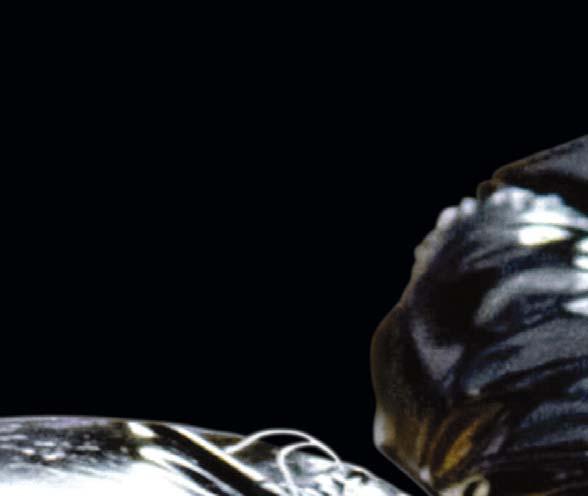

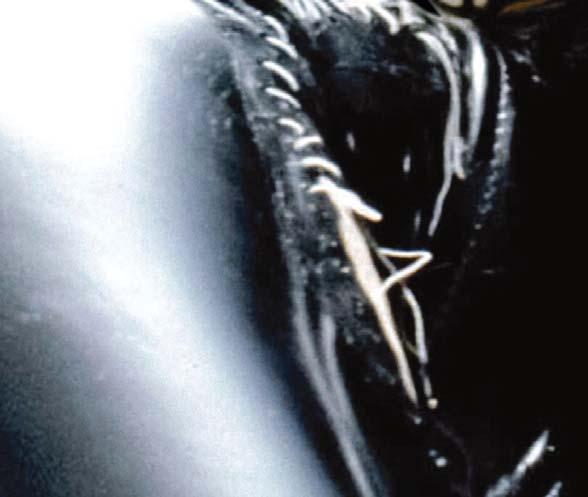
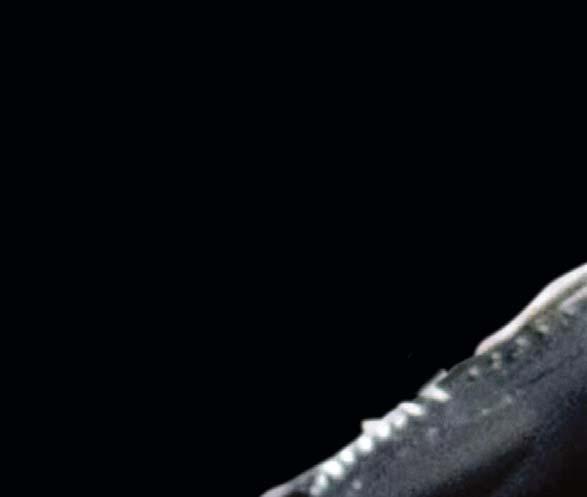
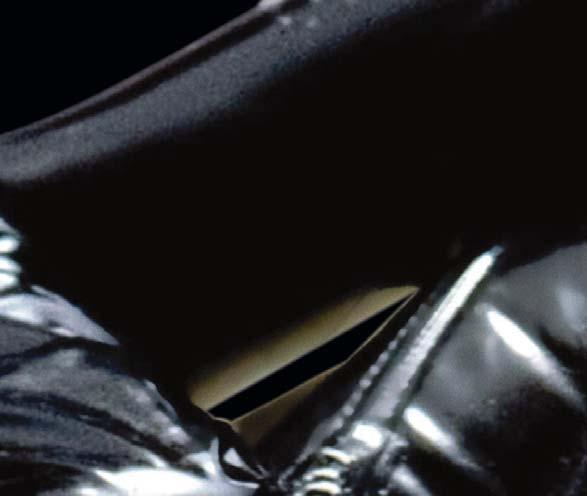



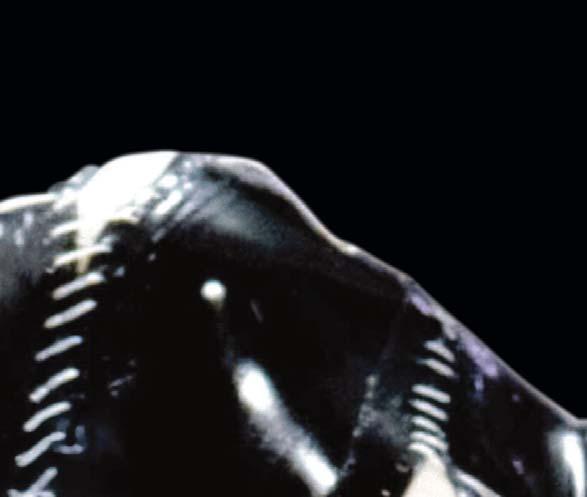

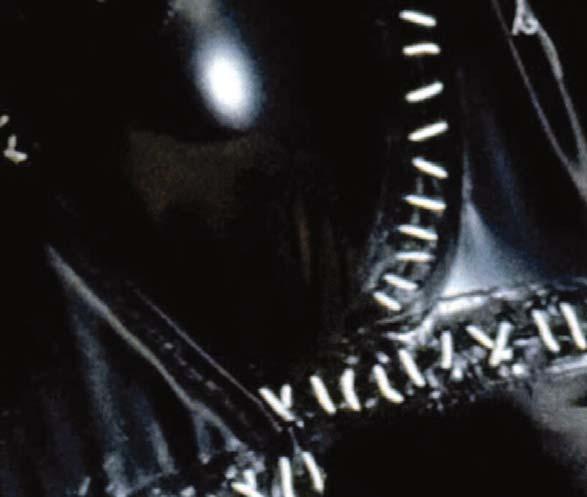
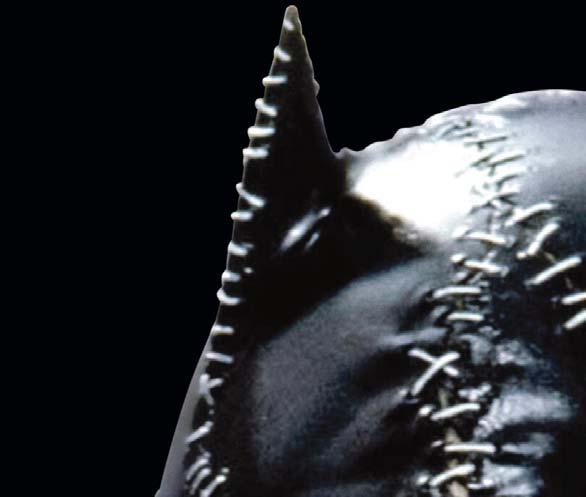

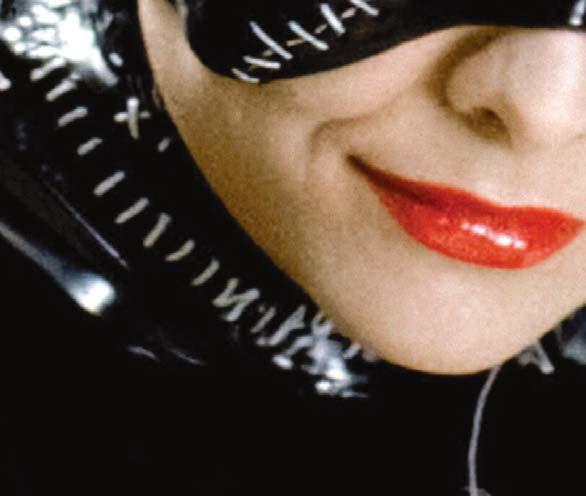


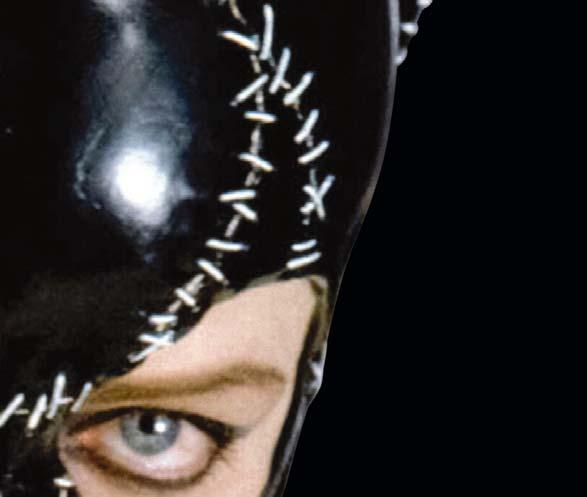

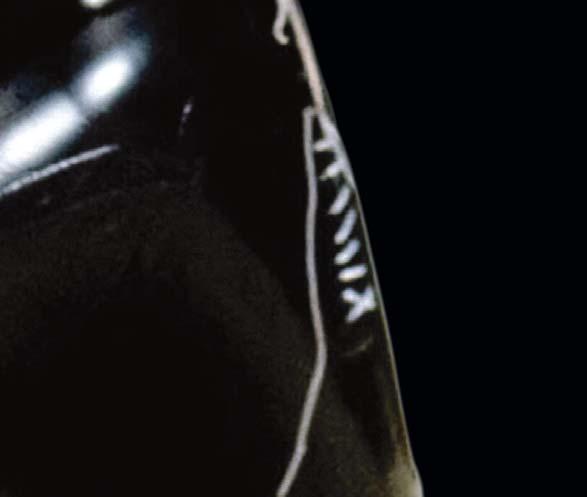

Raissa Bretaña, Fashion and Textile Studies: History, Theory, Museum Practice ’18, has worked professionally in film, television, and theater and taught the history of fashion in film. Now the education and collections assistant at The Museum at FIT, she says that costumes are “crucial” for storytelling and character development.
“Costumes play a really important role in communicating not only the setting, but also what the society is,” Bretaña says. “They immediately tell your audience who the character is. They help show the journey that they go on throughout the course of the narrative.”
Costume designers are, therefore, more than designers or stylists. They are storytellers, historians, technicians, and psychologists. Edith Head—the Hollywood legend who dressed Grace Kelly in Rear Window, Cary Grant in Notorious, and Audrey Hepburn in Roman Holiday, among many, many others—called herself “the dress doctor.” (It was the title of her first memoir.)
A costume designer “without diplomacy—or worse, without a flair for psychoanalysis—is sunk,” Head declared.
“It’s an inherently collaborative discipline,” Bretaña says. “You have to serve the director's greater vision. You have to communicate with the producers, who are in charge of the purse strings.”
Balancing the budget is, Bretaña says, the costume designer’s biggest challenge.
“And of course, you have the actors, who often have opinions on what they think their character should wear,” she adds. Costume designing is “an exercise in problem solving where you really have to try to accommodate as many different viewpoints as possible on a very short timeline.”
Jeriana San Juan, Fashion Design ’04, agrees. Every choice the Emmynominated designer makes—from the color of a garment to the silhouette—is “driven to support the story” and “enhance the director’s vision.”
San Juan was costume designer for the series Halston and The Get Down as well as the Jennifer Lopez film The Mother, all on Netflix. She learned how to transfer her dressmaking skills to the stage and screen at FIT, where she started the FIT Theater Ensemble and interned at the costume house
Parsons-Meares, which provides clothing and accessories for Broadway shows.
There, San Juan observed how professional costume designers did their work. “I would watch them in fittings, watch what kind of notes they were giving and where their eye was traveling,” she says. “I noted what was important to them, how the assistant functioned—I really was a fly on the wall, trying to understand how that all worked.”
San Juan further honed her skills at Saturday Night Live, where she worked as a costume designer and stylist for five years. “I really learned to think on my feet and trust my gut, because you have to act so quickly,” she says. “The clock is ticking from the moment you get there Wednesday evening until midnight on Saturday.”
Once, she had 24 hours to procure five California Raisins costumes for a sketch. Little did
she know that the California Raisins’ likeness is copyrighted, and that only specific performers are allowed to don the costumes.
That’s how she ended up on the phone with the president of the California Raisin Board Association at 11pm on a Friday, explaining how she needed the costumes in New York the next evening. “I must have sounded so crazy,” San Juan says with a laugh. “And then I had to call [SNL producer] Lorne Michaels to get his direct approval to pay for a private plane to fly five California Raisin costumes and their performers to New York!” But she did it: the raisins made it to the Big Apple by 4pm Saturday.
San Juan faced an entirely different challenge for Halston, starring Ewan McGregor as the late disco-era designer. “As the costume designer of this show, I would not


only be creating Halston’s image, but I would be, in many cases, designing in his voice—creating Halston collections that didn't necessarily happen,” she says. “I met with many of his contemporaries in my research who had such a profound affection for him, so I wanted to honor them and honor the person they all loved so dearly.”
The process required an incredible amount of research, as well as technical skill. A costume designer, after all, not only has to hunt down the impossible, but to create clothing out of whole cloth.
San Juan constructed caftans and slinky dresses that mimicked Halston’s style and coached McGregor on how to convincingly hold a pair of scissors, pull out fabric from a roll, and cut a dress on the bias—all things she mastered at FIT.
“FIT gave me an unparalleled tactile relationship to clothes,” San Juan says. She could whip up a sequined jumpsuit for Maya Rudolph playing Donatella Versace on SNL in no time flat or embellish a graffiti-splashed denim jacket for The Get Down, which takes place in The Bronx in the 1970s. “To
Many of the most iconic costumes for film and TV were created by FIT alumni. Here are some of our favorites
JOHNETTA BOONE , Fashion Buying and Merchandising ’84, spent decades styling still-photography images for editorial and commercial projects before she got her first costume-design break, for 2008 indie The Great Buck Howard. She now masterminds the clothes worn in the Western drama series Yellowstone, which in its five seasons has helped popularize “yee-haw” style: authentic country boots, Pendleton coats, and cowboy hats, which Boone mixes with European high fashion and Native American designs. “I learned how to sew at a very early age from my mom—a skill that I’m always evolving,” she says. “But as a costume designer, it’s very important one understands the business aspect,” which she learned at FIT. “We are, in fact, merchandising.”
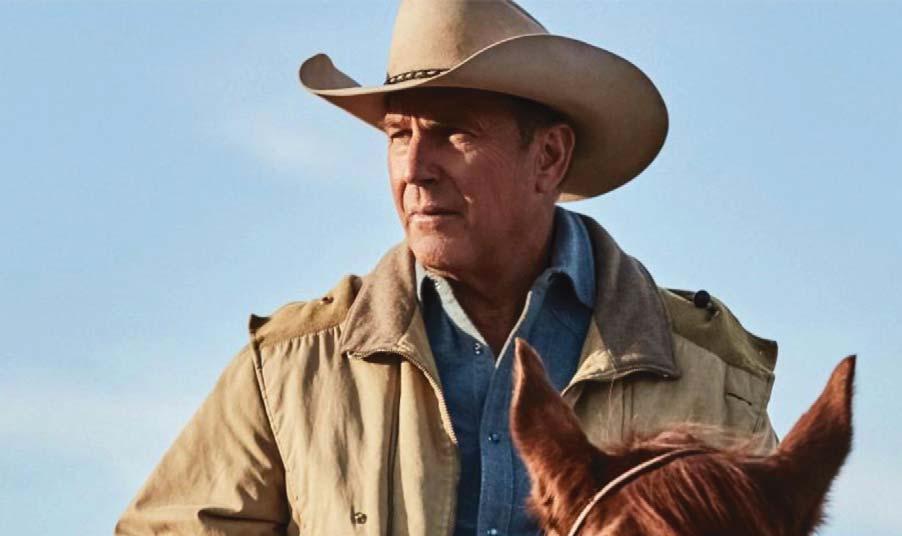
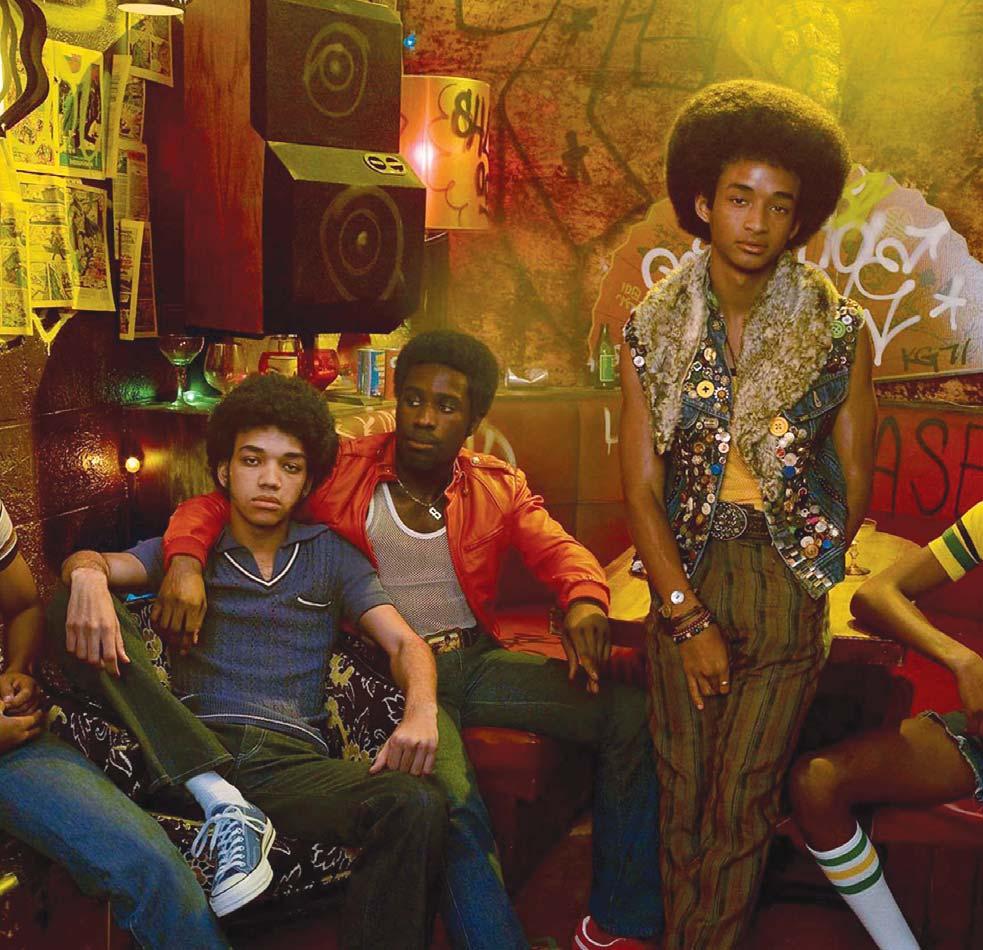
know how to knit on a machine, to create patterns, to drape —that’s invaluable.”
Charlese Antoinette Jones sewed her own going-out clothes as a teenager in suburban Maryland.
After studying fashion merchandising and marketing, she moved to New York City and signed up for a styling course through

JULIET POLCSA , Fashion Design '81, has worked with directors Gus Van Sant, Stanley Tucci, and Antoine Fuqua. But she will forever be associated with The Sopranos, which she styled for its entire six-season run, from 1999 to 2007, and for which she received four Emmy nominations. That groundbreaking series launched an ongoing obsession with New Jersey mob aesthetics, thanks to Polcsa’s flashy ensembles—from mafia boss Tony’s novelty ketchup-print button-down to wife Carmela’s “cooked shrimp” nail polish. Polcsa went to stores where actual gangsters shopped, studied police surveillance videos, and went to several strip clubs to outfit the strippers and staff at the Bada Bing. "Whether the camera sees it or not, the outfit has to be complete," she told FIT in 2002 of her meticulous commitment to

authenticity. “The actors know the details are there, which is important in establishing their character. Then all they have to do is act.”
Before Polcsa joined The Sopranos, ANE CRABTREE outfitted James Gandolfini in a tan bathrobe and shorts for the series’ pilot. Yet it was the scarlet capes and white bonnets she created for Hulu’s The Handmaid’s Tale, which premiered in 2017, that would transcend the small screen, becoming a pro-choice symbol worn by feminist protesters across the globe. “I have found ways to scream via my work, creatively, in my art,” Crabtree—who studied Fashion Design at FIT—told Ms. magazine. “I think other women have felt that—that’s what they’ve told me—that’s why they don the costume, because you don’t have to say a damn word.”
MARY E. VOGT , Illustration, has had a hand in designing the otherworldly costumes of movies like Hocus Pocus (1993), Men in Black (1997), and Crazy Rich Asians (2018). After studying at FIT, Vogt went to California and worked as a sketch artist for MGM. The legendary costume designer Bob Ringwood then hired her to help him with

FIT’s Center for Continuing and Professional Studies. She dressed models backstage during New York Fashion Week before landing an internship in the costume department for 2009 comedy Solitary Man
“I was getting coffee and picking up and dropping off clothes,” Jones says. “It was basic but really essential. I’ve done almost every job in the costume department, so I really understand how much
work goes into every position.”
Jones continued working on films while taking courses in drawing and pattern-making, among others. “As I got further into my costume design career, I wanted to acquire skills so I could communicate with my tailors and with my team better,” she explains. “Those FIT courses were awesome.”
Jones has a keen eye for sourcing vintage styles for period movies like 2021’s Judas and the Black Messiah, about the Black Panther activist Fred Hampton, for which she earned a Costume Designers
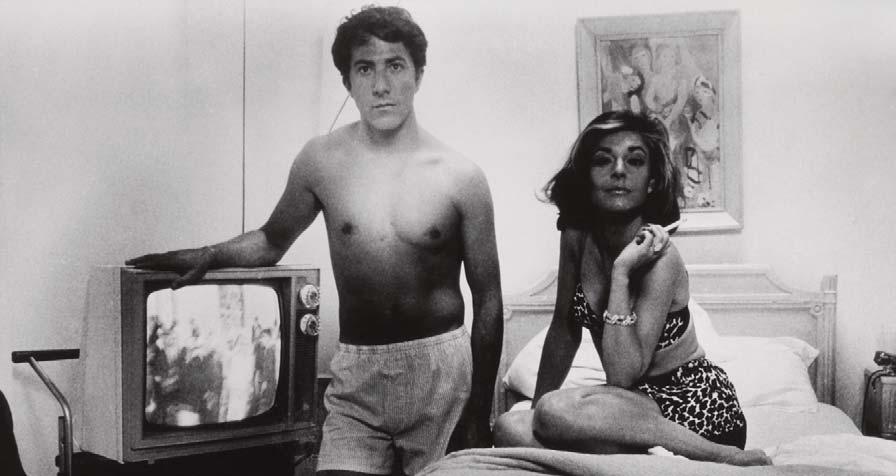
the sci-fi looks in David Lynch’s Dune (1984), and the pair reunited on Tim Burton’s Batman Returns (1992), where Vogt oversaw the construction of Michelle Pfeiffer’s now-iconic Catwoman suit. “I feel I’m there to help the actors create the characters in the story,” Vogt told students at Woodbury University in 2019. “You can have the most beautiful design, but if the actor doesn’t feel the character in it, you have nothing, and you need to start over.”
A trip to the ballet inspired PATRICIA ZIPPRODT , Fashion Design, to enroll at FIT to learn the craft of fashion and costume design. She quickly made a name for herself on Broadway, winning Tonys for Cabaret, Fiddler on the Roof, and Sweet Charity. But she’s probably best known today for the 1967 classic The Graduate, for which she transformed Anne Bancroft into a frisky cougar and Dustin Hoffman into an avatar of Ivy League style.
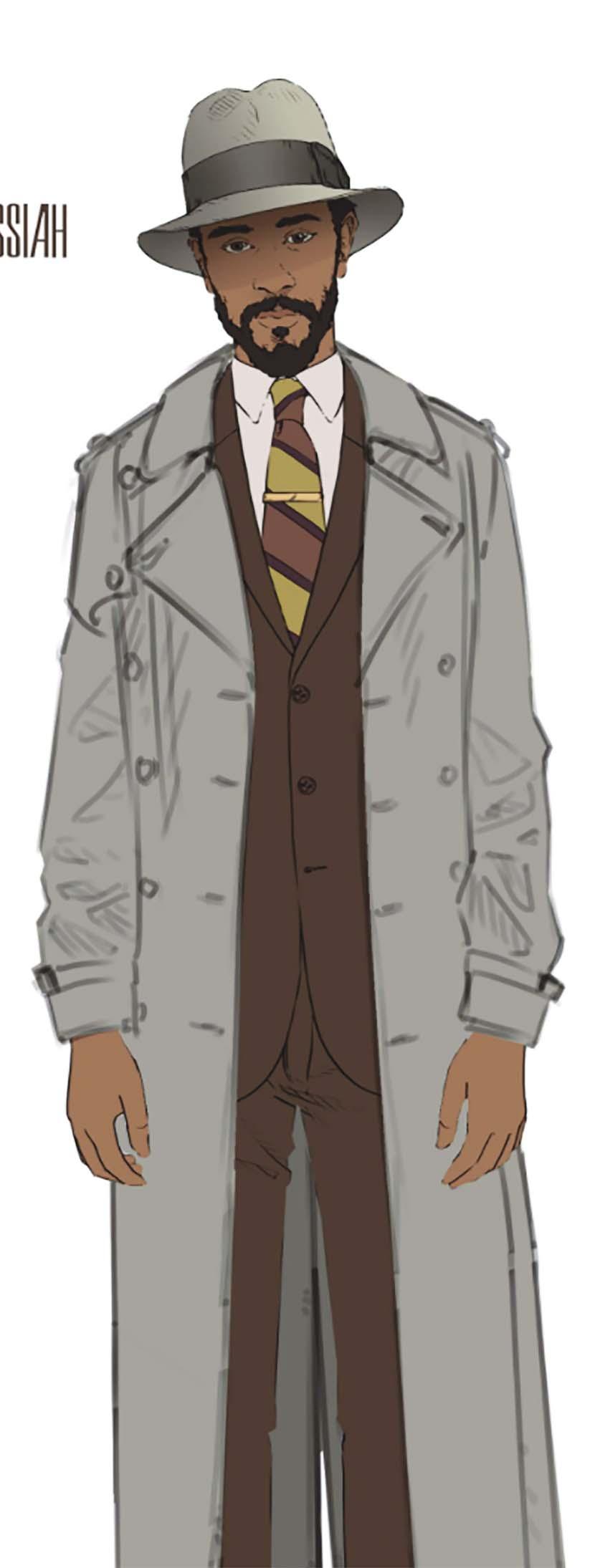
Guild nomination. She also builds many of her costumes from scratch, including Ben Affleck’s loud 1980s track suit (worn with wraparound sunglasses) in 2023’s Air
“That was a challenge, because a lot of those athletic performance fabrics from the 1980s just don’t exist anymore,” she says. “We had to do a lot of running around and color-matching to find that windbreaker material!”
Jones says that all this is done in service of the character—and to help the actor find the character’s voice. She makes sure her
KASIA WALICKA-MAIMONE began making her own clothes when she was 5; years later, when she moved to New York City, she enrolled in Fashion Design courses at FIT. Walicka-Maimone has worked in every genre, from crime (2014’s A Most Violent Year) to sci-fi (2018’s Ready Player One), and frequently collaborates with the director Wes Anderson. Lately, she has won acclaim for her spectacular period costumes in the HBO series The Gilded Age. “I always say that I don’t choose subjects by the period, I choose them if they are a good story,” she told “The Film Experience” blog in 2015. “I don’t really care if it’s the 1800s or 2010. If it’s a great character-driven thought process, it’s engaging.” —R.L.

fittings are places where actors feel comfortable improvising, playing, and offering suggestions. “It’s really cool to watch someone become the character,” she says, recalling her first meeting with LaKeith Stanfield, who played an FBI informant who infiltrates the Black Panthers in Judas and the Black Messiah. “He put on this trench coat and all of a sudden he’s walking differently, he’s swinging his arms. And then of course that led to him wearing this coat and it flying behind him when he jumps over the car and getting this cool, iconic shot.”
Costumes give actors confidence and insight into the soul of the characters. They capture the imaginations of the audience as well. Costumers have the power

to change the way we dress in the real world. The 1967 gangster film Bonnie and Clyde ushered in a wave of 1940s-inspired fashions (including berets and fedoras), while the 1970 weepy Love Story sparked a craze for knitted hats like the one worn by its star Ali MacGraw. Now, between the Fleabag jumpsuit and Barbie pink, costumes have more power than ever.
“I am pleasantly surprised by how many trends I see that are rooted in films or TV shows,” Bretaña says, noting the uptick in goth-inspired garb on FIT’s campus after the Addams Family spinoff Wednesday debuted in 2022. “I think we are living in a world where perhaps the greatest fashion influencers are actually costumers.” ■

her new PR
BY WINNIE MCCROY
Laura Sok was a fresh-faced 17-year-old when she arrived at FIT in August 2002, yet the creative industries already ran through her veins. Sok’s father was an ad exec for brands like Timex and PVH, and her grandfather had run an old Warner Brothers movie palace. Sok’s first job was in her uncle’s video store—but now she calls the shots at her two-woman film publicity and consulting agency, Track Shot.
In June 2023, she and her former IFC Films colleague Kate McEdwards teamed up to create Track Shot and work “on films and with clients we believe in,” Sok says. First-year highlights include placing two films at Cannes; and in January, the firm sought distribution for Steven Soderbergh’s thriller Presence, which premiered at Sundance. In one of the major deals of the festival, they teamed up with the sales agent to get the film acquired by Neon, the indie film studio notable for distributing the past five Cannes Palme d’Or winners.
As a boutique PR company, Track Shot tailors strategies to help independent films succeed. This means providing many more services than a typical movie publicist. They run national and regional campaigns doing film festival publicity, distribution strategy, events and special exhibitions, budget consulting, talent handling and logistics, relaying industry updates to markets via trade releases, and unit publicity (inviting journalists to set during shooting).
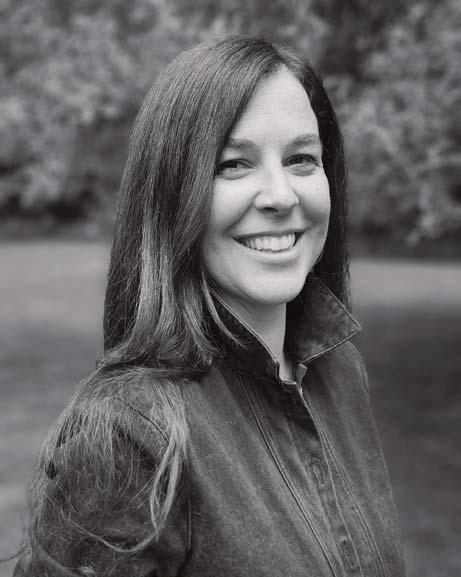
They advise on marketing materials including trailers and posters— both on what makes a compelling image and the ideal moment to release it. Their combined experience working on hundreds of films has taught Sok and McEdwards every beat to hit. Track Shot creates press notes and seeks champions from their carefully cultivated network of critics, an undertaking that has become more difficult as publications assign fewer film reviews and amateurs compete via YouTube.
Next, they set up interviews with “a whole ecosystem” of press agents, media buyers, and journalists. “You have to make a lot of noise if you’re
not supported by a large studio with a huge budget. Just one article or review won’t make something a success,” says Sok. “My job is to get involved as early as possible to be the best advocate for the film.” Studios get countless film pitches. Track Shot works to get distributors interested in their films so they will want to acquire them. Sok does this by identifying journalists interested in that genre or director, getting them excited about the film, and then persuading them to review the film and write about the talent. She shares that positive press with distributors, so they’ll also want to see the film and potentially give it a theatrical release. Track Shot also places films with appropriate streaming services ranging from Amazon Prime to Google Play, as “big streamers are rigid on what content they will take, while others have more wiggle room.”
Another success story is A24’s queer-themed supernatural film, I Saw the TV Glow. It entered Sundance with a distribution deal already in place, so Track Shot’s job was to build hype for the theatrical release. “The strategy was different because we’d worked for six months prior to publicizing it,” Sok says. “When you see a movie on opening weekend, you don’t realize how many months have already gone into reviews, features, bookings, and TV interviews.”
Most rewarding for Sok is seeing her clients’ success—like India Donaldson, whose directorial debut, the queer coming-of-age drama Good One, was the only film invited to both Sundance and Cannes. It was screened in a New Directors/New Films slot by MoMA and Film
at Lincoln Center, after which a distributor picked it up and released it to art house theaters in August 2024. “It’s a dream scenario for a first-time filmmaker,” Sok says.
Even if contracted later in a project, Track Shot can continue PR for months, especially if the film’s a hit. After festival season, the Emmy and Oscar awards races heat up, and Sok and McEdwards hunt for innovative ideas, such as planning drive-in movie releases for several IFC Films during Covid.
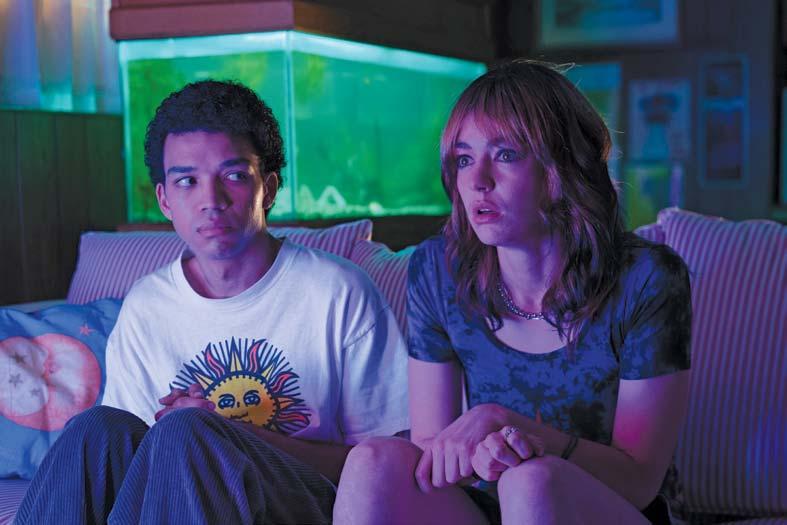
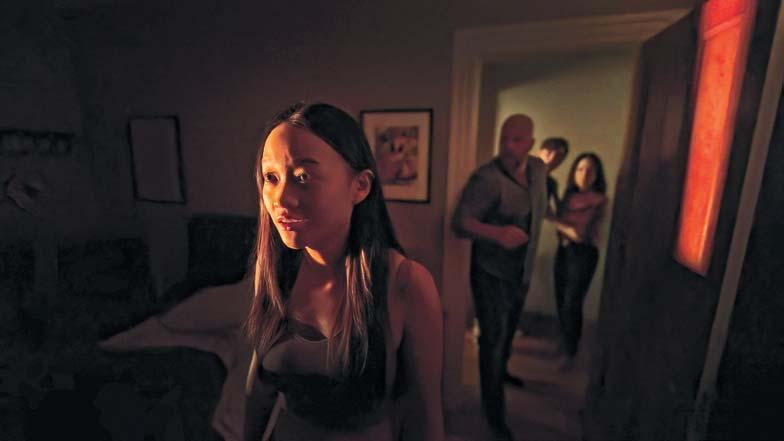
Sok’s talent for ingenious problem-solving started early. “I had an eye into the creative side of commercials and marketing while I was growing up,” Sok says. “I didn’t know exactly where that would take me, but I was good at writing and design, and I knew I wanted to be in New York City. That always sparked for me.”
As a teen in FIT’s Presidential Scholars program, she saw motivated students making the most of their time. She followed their lead, dedicating three weekdays to classes and studying, and then interning at Time Out New York, Revlon, and Brooks Brothers, fine-tuning her passions. To earn pocket money, she worked coat check in a club.
After graduation, Sok got a job as an assistant at New Line Cinema, and she was on her way. By age 21, she was working on studio projects like Hairspray with John Travolta and Michelle Pfeiffer. From there, she furthered her career at Cinetic Media, Oscilloscope Laboratories, and Cinedigm Entertainment. She even lived in the Netherlands, consulting for International Film Festival Rotterdam.
Sok found she loved the independent film ecosystem most. She’d had an early production assistant gig at IFC Films and was hired years later as their vice president of publicity, collaborating with McEdwards to handle dozens of films annually. That’s where the two realized they wanted to get back to the nitty-gritty of indie films.
So Sok and McEdwards teamed up, founding Track Shot and choosing films that spoke to them: smaller films made by people they trust and can collaborate with, rather than sprawling epics with a lot of fingers in the pie. “The best thing about running your own business is, if a project’s not a fit, you don’t have to take it,” Sok says.
McEdwards says it’s a privilege working with people you trust implicitly on projects you love: “At the beginning, it was about challenging ourselves to build the work environment we wanted by collaborating
with filmmakers on their releases, getting in touch with the transformation of our industry during the pandemic, and rediscovering the love we spent so many years nurturing from a new perspective. I think we’ve achieved that.”
Running a relatively new boutique PR agency means the pair must occupy every role from chief cook to bottle washer, staying two steps ahead and preparing for the unexpected. Sometimes it’s working back-to-back 20-plus-hour festival shifts. Sometimes it’s logistical, like finding an actress’ lost luggage in Singapore, or the time an Oscar-shortlisted director was stuck in London, and Sok scrambled to get him to L.A. for an Academy members screening.
Other times it’s downright visceral, like when an Austrian director got food poisoning before her Sundance film premiere but couldn’t bear to miss it. The director stood onstage for the introduction and pictures, then crashed in the greenroom while Sok retrieved Pedialyte and Popsicles. The woman recovered in time for the next day’s screening, thanks to Sok’s team.
“In the entertainment PR industry, you must be able to jump into the fire at an early stage, multitask, and keep a cool head, because anything can come at you,” says Sok. “If the unexpected happens, well, we’re all human—just think quick and do it with a smile.” ■
MPS ’13, created a cosmetics collection to promote the remake of The Lion King
BY JONATHAN VATNER





In October 2018, Andrew Videira, the Houston-based chief marketing and product officer of the beauty brand Luminess, fielded a request to create a custom cosmetics collection to build buzz for the live-action remake of The Lion King . It would become the greatest challenge of his career—and serve as a model for how films can gain an unlikely boost from the beauty industry.
In a typical licensing agreement, a cosmetics brand will purchase a license for a film or other franchise, then pop a custom sleeve onto an existing makeup palette and sell to fans of the movie. The cosmetics brand trades on the franchise’s popularity to make money. With The Lion King’s makeup line, however, Disney imagined a more customized arrangement. They wanted a fully branded line, developed from scratch, whose primary purpose was to promote the film, not just capitalize on it. And Videira’s team had six months to do it.
Beyoncé was heavily involved in the film—she voiced the character of Nala and composed the soundtrack—so it was only natural that her makeup artist, Sir John Barnett, known as Sir John, would conceptualize the beauty line. He chose a color palette based on the earth tones of Africa, and Videira’s team of five developed the formulations to his specifications. They named the products and shades after characters, landmarks, and songs in the movie, like Pumbaa, Pride Rock, and Circle of Life. Typically, a license restricts or forbids the use of names from the movie, but as this was a marketing partnership, Luminess could exploit more of the intellectual property.
Videira’s team also developed art and innovative packaging concepts. In a licensing arrangement, a beauty company usually takes cues from the film to develop the packaging—but in this case, the film would not be finished until shortly before the premiere. And Disney kept the finished scenes under wraps. About once a week, the Luminess team flew to Los Angeles for a screening at Walt Disney Studios. Inside the Team Disney building, a temple-like structure held up by the seven dwarves like the caryatids at the Acropolis, Videira’s team was patted down for recording devices and ordered to place their hands on the screening room table before being shown a one-minute clip of the movie with the words “do not copy” watermarked across the screen.

But even though Videira saw very little of the movie in advance, he had the original 1994 animated version to draw from. In a beloved scene from the original, Rafiki and Simba see Mufasa’s face in the stars. The Luminess team created etched, 3D-printed packaging inspired by this constellation, a sculpting palette featuring Simba’s face and an eyeshadow palette with Nala’s. The Disney team loved the prototypes but told Videira that Nala’s eyes did not look the way they did in the live-action film.
Videira responded, “I don’t know what her eyes look like—I haven’t seen the movie!” In the animated film, her eyes were blue, but in the
remake, they were yellow and brown. It was too late to change the design, so her blue eyes in the packaging became an Easter egg for the team.
The challenges kept coming. Videira took two or three business trips a week, to those micro-screenings at Disney Studios and meetings with Sir John, also in Los Angeles; to Luminess’ cosmetics factories in East Asia; and to New York City to tell magazine editors about the cosmetics line. He barely had time to catch his breath for the entire six months.
“Every day was another deadline that you could not miss,” Videira recalls.
The final collection comprised a sculpting palette, an eyeshadow palette with earth and metallic tones, a matte and liquid lipstick, a tinted lip balm, and a highlighter. An eyeliner had to be nixed because there wasn’t time to perform essential testing.

The keepsake packaging looked and felt luxurious, and it tied into the film in a meaningful way, down to the smallest details, like patterns etched into the palettes and claw marks on the lipstick.
Before launch, Videira’s team went on the biggest press tour Disney had ever done for its beauty collection—60 “desksides” with editors in a single week. It was the biggest launch Luminess had everX done, too. The strategy blended traditional beauty marketing (collaborating with influencers and magazines) with movie marketing (posters, billboards, commercials in theaters). For the premiere, Disney installed a replica of Pride Rock in the middle of Hollywood Boulevard, and Luminess provided the makeup to guests and set up a gifting lounge and photo-op area.




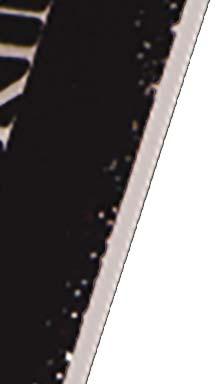


everything within the first 24 hours. Videira saw the items going for as much as $900 on the resale market.
Disney has famously high standards, and this added an extra layer of complexity to the marketing and PR efforts. “Every piece of content, every Facebook and Instagram post, and every product shot needed to go up to [Disney CEO] Bob Iger’s office.”
The hard work was worth it, because the media went wild. Before anyone had seen the movie, the line garnered enthusiastic coverage in Vogue, Us Weekly, Byrdie, and Cosmopolitan—5 billion media impressions in all. In a full-page story, O, The Oprah Magazine called it “a gorgeous new way to take pride in your summer makeup game.” Ulta Beauty sold out of almost
“They fell in love with the look, the feel, how custom it felt,” Videira says. “There was such nostalgia with this age demographic that when the movie came out, it hit everything right.”
Promotions tied to films usually live only a few weeks; this one kept selling until The Lion King was released to on-demand streaming, six months in all. But the beauty collaboration had done its work. It not only profited Luminess, but it also generated a huge amount of buzz for the movie, which ended up grossing more than $1.6 billion worldwide.
“I have a few highlights in my career,” Videira says. “To launch a whole brand in six months, start to finish? That was at the top.” ■
















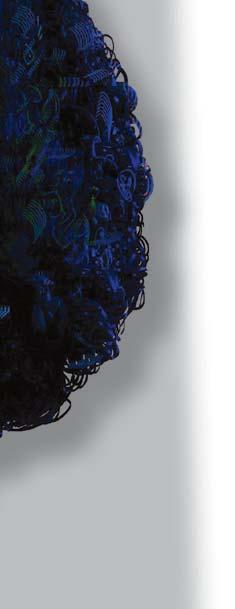









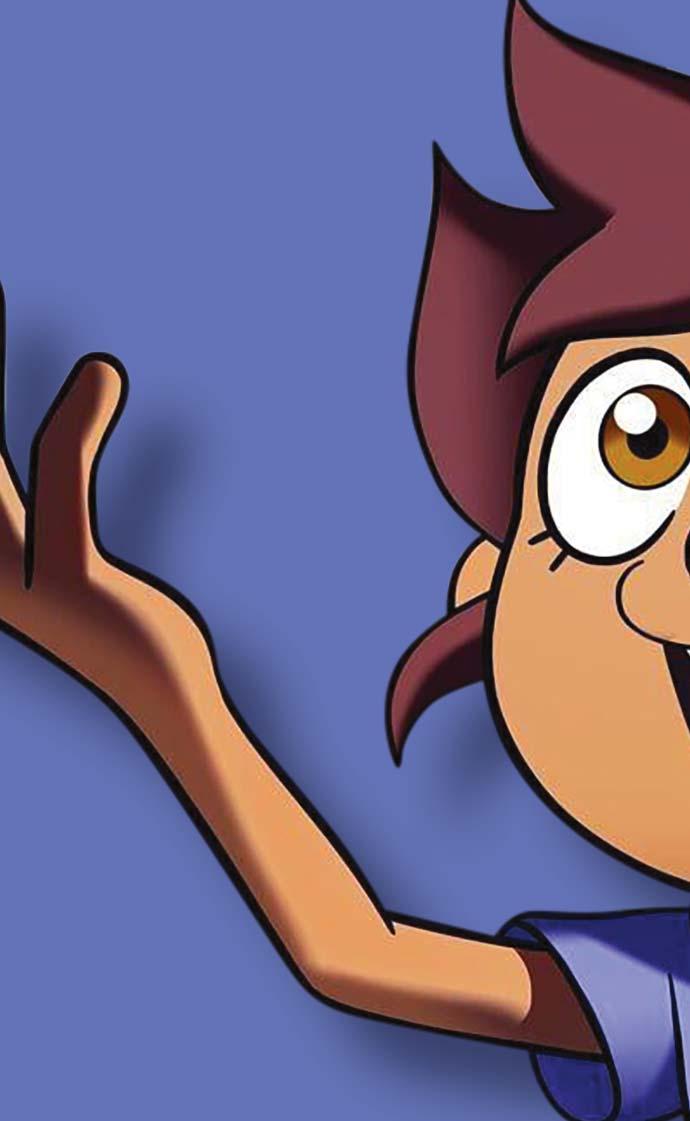

























The industry’s journey toward inclusivity






















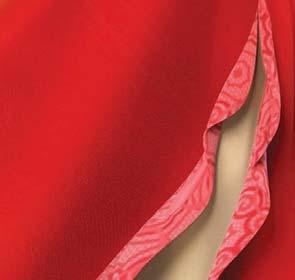
















BY LIZ LEYDEN







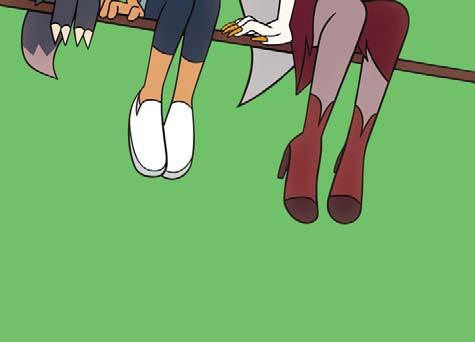
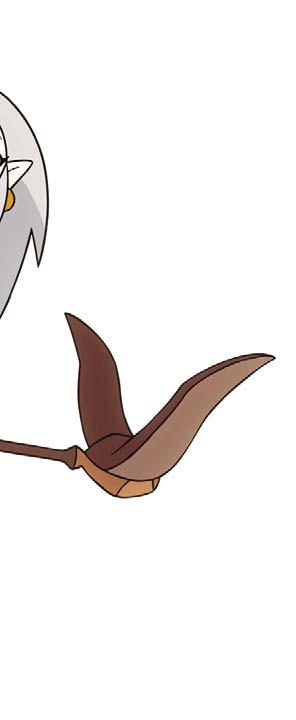
likes to scroll back in time and watch behind-the-scenes videos celebrating the magical midcentury rise of animation. The reels, thick with celluloid sheets and pots of ink, capture the early days of the industry and the men in pressed shirts at its center.






It’s fun to see these animators at work, but Bennington—a nonbinary queer illustrator whose résumé features a self-portrait of an artist with spiky hair and triple-pierced ears—cannot easily imagine themself the frames.

studios increasingly embrace talent from across racial, ethnic, and gender identities—including FIT alumni like Bennington.


Since landing an internship at Nickelodeon during their junior year, Bennington, Illustration ’15, has built a thriving career at the network, first as a storyboard revisionist on Blaze and the Monster Machines and now as a background designer on The Patrick Star Show
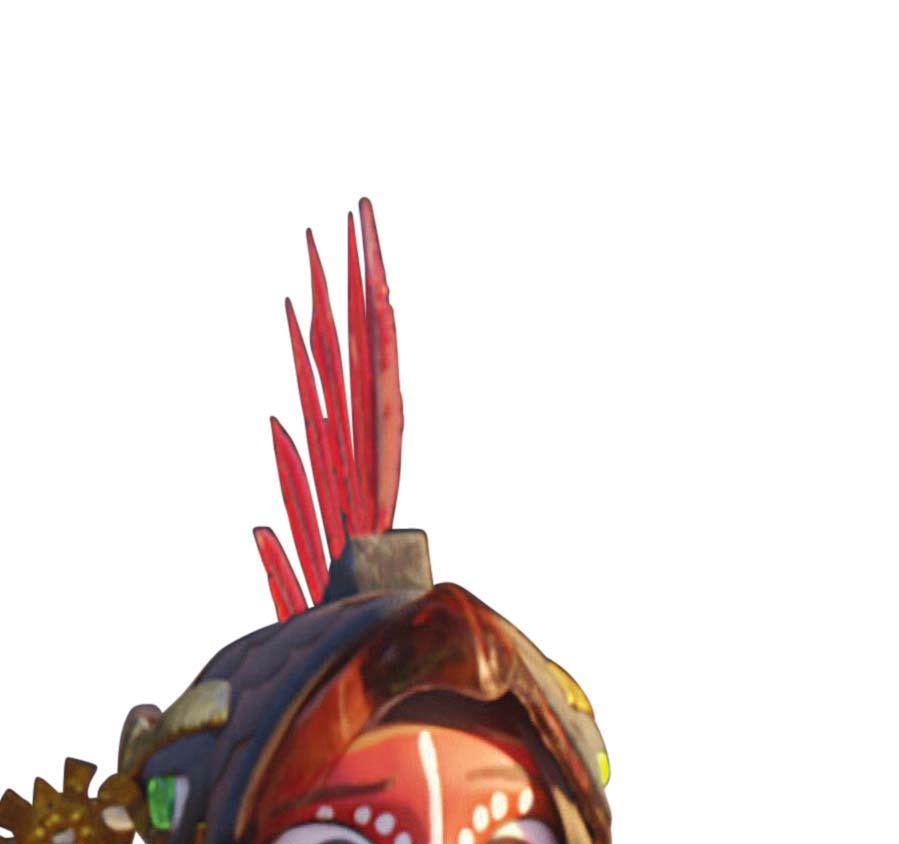
Luckily, they don’t need to.






















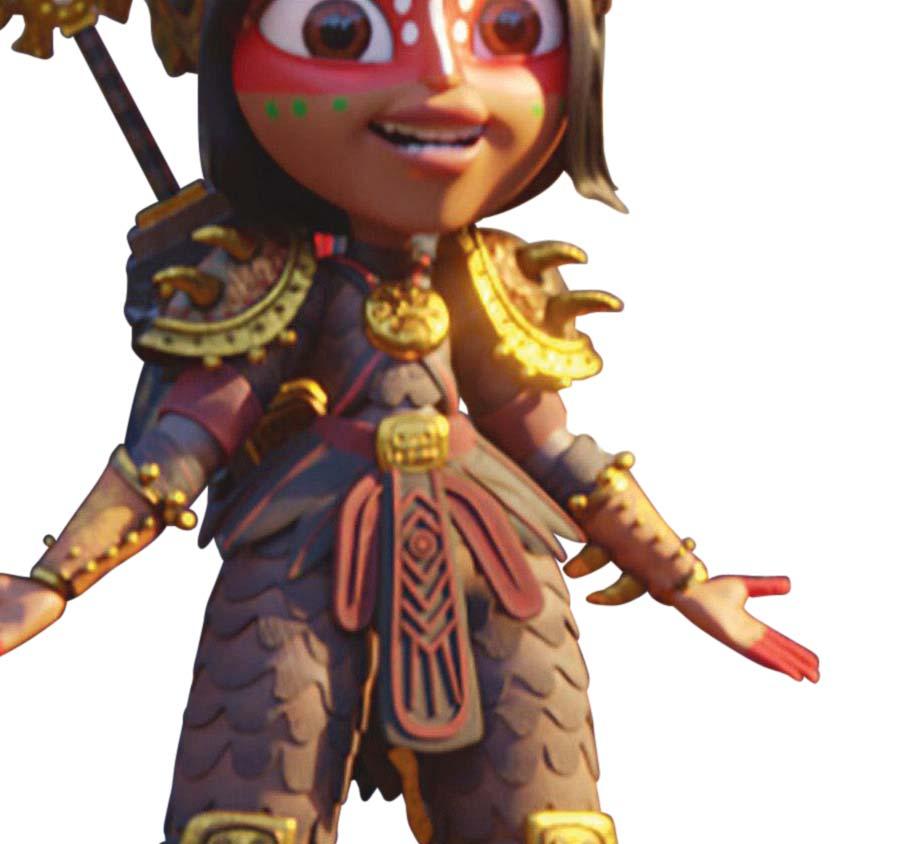
In the decades since Disney first dazzled audiences with Snow White and the Seven Dwarfs (1937), the animation industry has evolved to reflect the wider world. Storylines now spotlight increasingly diverse casts of characters, from Miles Morales in Marvel’s SpiderMan: Into the Spider-Verse (2018) to Luz Noceda on Disney Channel’s The Owl (2020–23). Themes of empathy and inclusion percolate beneath zippy punchlines and rollicking adventure, challenging stereotypes and introducing audiences to different perspectives. And the artists, technicians, and writers animating the work have changed, too, as
“There was never any feeling that you couldn’t be exactly who you are,” they say, adding with a laugh, “as long as you can hit those deadlines.”
For years, progress toward a more inclusive industry moved slowly. When Dan Shefelman, chair of FIT’s Illustration and Interactive Media Department, first began working on Nickelodeon’s Doug and MTV’s Beavis and Butt-Head in the early ’90s, women were just beginning to expand their ranks; racial diversity among Shefelman’s colleagues was even more limited.
But the launch of the Cartoon Network in 1992—with its dedicated 24-hour cartoon programming—and the spread of animated shows onto networks ranging from MTV to Fox to Adult Swim sparked a wave of new opportunities throughout the industry; as the market for shows broadened, hiring practices gradually widened to meet the demand.
The animation landscape, Shefelman says, was “no longer just Saturday morning cartoons and maybe The Simpsons at night. It diversified. And I think that expanded the industry.”
The cultural footprint of the medium continued to grow over the next few decades, with a new generation of creators and subjects reaching
“I wondered, Where are the voices for people who are marginalized in animation? Where are the voices for the women trying to make their way in this industry?”
—
growing audiences around the world. Films from international artists at Japan’s Studio Ghibli and Ireland’s Cartoon Saloon were released in U.S. theaters. American studios produced groundbreaking and critically acclaimed television shows like Samurai Jack, featuring a Japanese samurai prince, and Steven Universe, known for its LGBTQ+ representation.
Shefelman notes that another pivotal moment for the industry arrived in 2020, when the murder of George Floyd shone a light on systemic racism across the country. Throughout Hollywood, there was a sudden acceleration of efforts to expand workforce representation and satisfy audience demands for more diverse stories.
“Netflix specifically just went on a crazy buying spree,” he says, pointing to shows like Maya and the Three (2021), about a Mesoamerican warrior princess, and development deals with Japanese and Korean studios.
Shefelman notes that the push is no longer simply about ethics but also about economics: Cultivating diversity has become a business-driven necessity, not just in the characters on screen but also among the artists who create them.
“Audiences are so diverse, and hiring more diverse talent within your company, especially creative talent, will help you appeal to them,” he says. “It’s not just about profits, but if you resonate with an audience, you’re going to make a profit.”
FIT’s BFA program in Animation, Interactive Media, and Game Design has long attracted students who reflect the vibrant spectrum of New York City, with outreach efforts in local high schools, community colleges, and nonprofits like The Animation Project, a workforce development initiative that introduces low-income people of color to digital arts technology. (Shefelman is on The Animation Project’s industry council.)

Tyler Hernández, Animation, Interactive Media, and Game Design ’24, found her way to FIT through its Office of Educational Opportunity Programs, which is dedicated to supporting promising students facing socioeconomic challenges
Drawing was a balm for Hernández during a complicated childhood. She filled notebooks with anime-inspired art and sketches of people on




the subway, and she dreamt of a career in animation. But with low grades, her college prospects were dim until an art teacher at the High School of Art and Design in New York City recognized her talent and connected her with FIT.








“I came to FIT with a mission to see if I could make stuff that would make the small kid in me feel seen and heard,” she says.
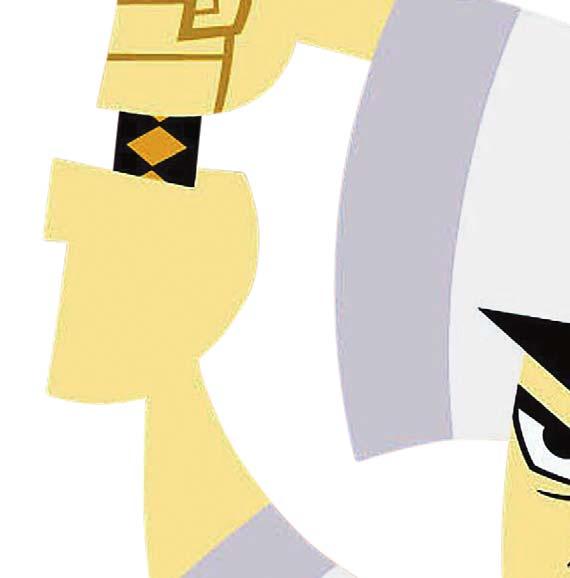



Hern á ndez infused her work with details of her identity as a New Yorker—one piece celebrated dandelions for their ability to grow from sidewalk cracks—and sought to strengthen supports for student animators.






“I wondered, Where are the voices for people who are marginalized in animation? ” she says. “ voices for the women trying to make their way in this industry?”





In 2023, Hern á ndez launched the FIT chapter of WIA (formerly Women in Animation), a nonprofit organization that advocates for increased representation of women and nonbinary people in the animation industry.


“I was naturally drawn toward these shows where my culture was being represented. People like seeing themselves in a mirror.”
“I was naturally drawn toward these shows where my culture was being represented. People like seeing themselves in a mirror.”
—David Cárdenas '13
DAVID CÁRDENAS ’ 13
Nearly 50 students studying illustration, animation, and graphic design joined the club, meeting regularly to network, participate in a 24-hour animation creation contest, and discuss the industry with guest speakers.
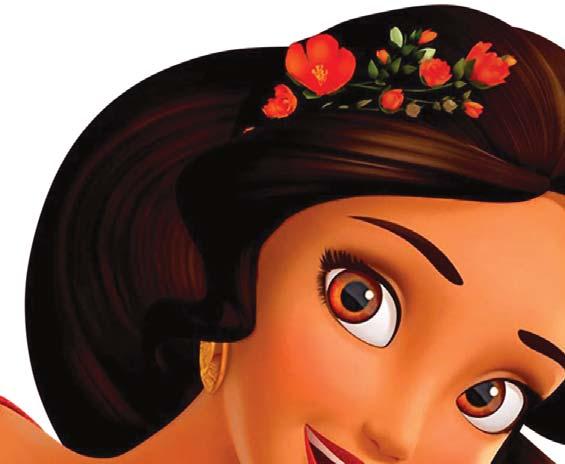
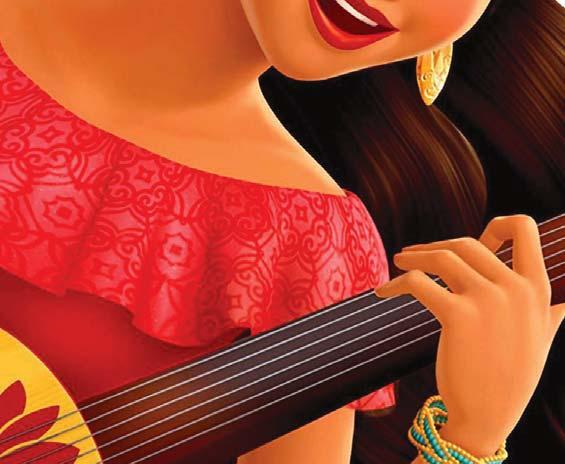


Now, as she applies for 3D animation jobs, Hern á ndez is working to build similar connections beyond FIT. She recently attended an event hosted by Viva La Animación, a group that encourages Latin storytellers to share their stories through animation.
“I’m no longer just flipping channels and waiting to see myself,” Hernández says. “I think that’s a big aspect of diversity that is probably not talked about enough: If you don’t look for your people, you’re not going to find your people.”
As coalitions based on identity have emerged, not only for women and Latinos, but queer, Asian, and Black artists, too, studios and creators are increasingly paying attention to getting the details of their stories right.
David Cárdenas, Illustration ’13, discovered that their cultural expertise was prized on Elena of Avalor, Disney’s first show about a Latina princess.
“I’m a Mexican designer who grew up in Mexico, so my perspective is wholly Mexican,” they say. “And so, I brought a bit of that love for Latin America to the show and strove to portray that through that particular cultural lens.”
As a kid, Cárdenas’ love of animation developed through video games and Disney movies. But they were especially captivated by El Tigre: The Adventures of Manny Rivera, a 2007 Nickelodeon show about a boy torn between his superhero dad and supervillain grandfather.
“Watching a Mexican superhero show really made a difference to me,” they say. “I was naturally drawn toward these shows where my culture was being represented. People like seeing themselves in a mirror.”
Since graduating from FIT, Cárdenas has worked on projects whose characters come from an increasingly diverse cartoon universe, including Mira, Royal Detective, set in an Indian kingdom, and Firebuds, a show about a Filipino-American boy who dreams of becoming a firefighter.
On Firebuds, the director met with staff artists to talk about accurately drawing the characters, sharing observations of his own Filipino family. Those details, focusing on physical characteristics, helped Cárdenas, working as a model designer, find the building blocks they needed.
“Having the varied perspectives really elevates these shows,” they say, adding, “When we’re talking about diversity in the sense of race and inclusivity, it’s just about reflecting the world and all its beautiful color as it is before us.”



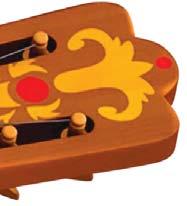

Though their experiences in the industry have been positive, Cárdenas is measured when assessing the scope of its progress. They point to friends of color brought onto shows for their perspectives only to feel unwelcome. They are wary about an increasing consolidation of power in the industry and fewer people “making the choice of what gets to be seen and what doesn’t.” And they are especially worried about the impact of artificial intelligence (AI), not only on jobs, but also on voices.“It’s kind of missing the plot to replace all these people and their perspectives with an algorithm.” Cárdenas says. According to a recent study commissioned by the Animation Guild, the industry union, AI will likely disrupt more than 118,000 jobs in the film, television, and animation industries over the next three years. The displaced jobs are predicted to primarily affect entry- and mid-level categories, where underrepresented artists have historically gained a

WELCOME TO CHIPPENDALES
In
2022
foothold in the industry. The effects, the study warns, will harm broader diversity goals.
With contract negotiations now underway, the guild is working to secure new AI protections and strengthen job security for its more than 5,000 members.


David Makadi, Illustration ’25, FIT’s first international Social Justice Center Scholar, on his dream of becoming an animator


Rebekie Bennington also hopes the contract brings pay equity for color designers, a fight that traces its roots to the industry’s early days when women were mainly relegated to Ink and Paint teams, now known as color design. Although Disney began to train women to be animators in the 1940s, the pay gap between genders remained for decades to come.




I grew up in the Democratic Republic of the Congo. I started drawing when I was 10 or 11, and I went to a high school for the arts. In 2010, my cousin told me about animation. He thought I would go far in this industry because of my drawing skills. I bought a computer but couldn’t get very far with web tutorials. I had dreams of working in big studios in America. It became my mission to get here.
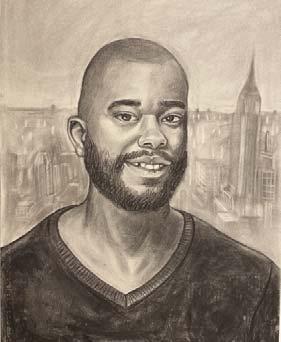


“Color design was very specifically a woman’s job in the studio, and as such, they are still fighting being lower paid than many other similar positions,” Bennington says. “This is absolutely tied into an old gender idea that no longer applies.”
This is a time of uncertainty for the industry. Layoffs surged in 2023 as streamers like Netflix struggle in the face of changing viewing habits, and studios are commissioning fewer shows. But while Bennington laments the slump—“I think it’ll be a while before we get another Steven Universe or Owl House, or another really progressive, beautifully made show”—they believe inclusive stories, and storytellers, are here to stay.
















“I certainly don’t think these characters are ever going to go away,” they say. “I think the can of worms that is ‘Kids can be queer’ has been opened forever, thankfully.” ■

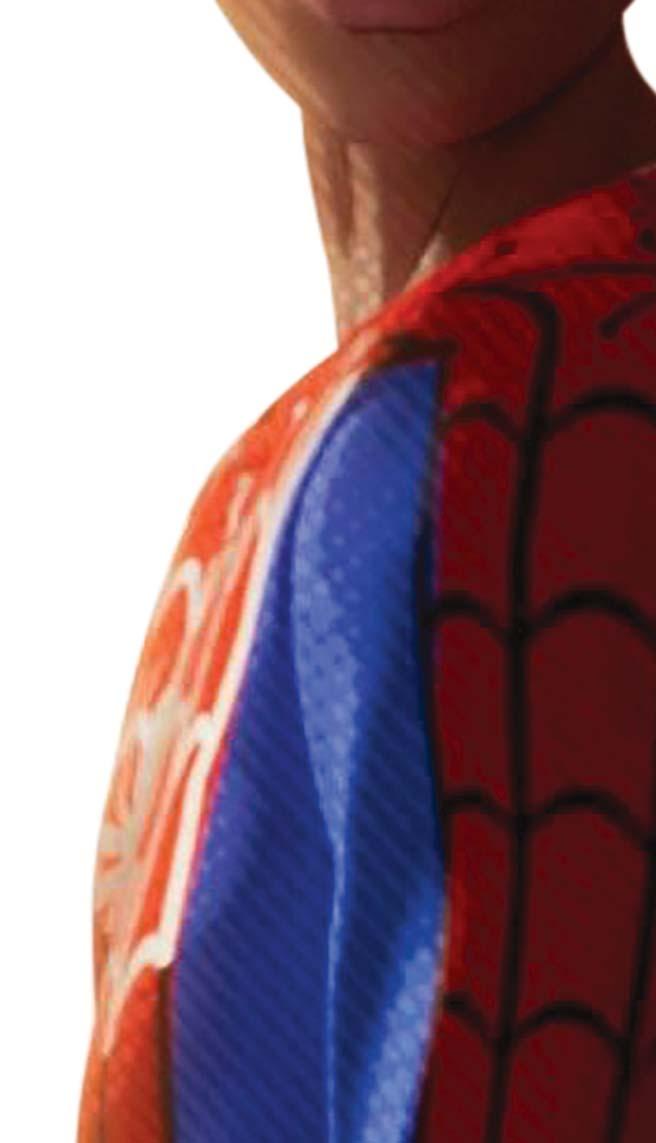

I posted my work on Instagram, and a guy in Los Angeles messaged me and started sending me short animation assignments. A Stanford professor was one of his clients, and she hired me for projects including a video about vaccines during the pandemic. One project had a budget to bring me to America.
In 2022, I was in America for eight days, trying to get someone’s attention to sponsor my visa so I could stay longer. The Stanford professor had a connection with Dan Shefelman [chair of Illustration and Interactive Media at FIT]. Dan recommended that I apply to FIT.
Coming into FIT, I thought I was going to chill because I already knew everything. But there’s a difference between knowing how to draw and knowing industry standards. Also, I’d never been in a situation where you are with 10 people from different backgrounds. My work gets critiqued from lots of different perspectives. And I’m learning from the best of the best.
The SJC Scholars give me a sense of community. They organize events and check in over email. We shelter each other.
There are a lot of talented kids in Africa who probably won’t get the help I got. Someday I plan to return to Congo to create a kind of library where people can learn animation. As told to Jonathan Vatner
The Social Justice Center at FIT creates pathways for BIPOC individuals to thrive in the creative industries. Social Justice Center Scholars benefit from a tuition scholarship, mentorship, and special programming.

Have a question you would like us to ask President Brown?
Email hue@fitnyc.edu; we’ll include as many as we can.
On Oct. 26, as part of Alumni Weekend, FIT’s chief storyteller, Alex Joseph, MA ’15, moderated a Hue Live panel discussion with three alums who have written acclaimed books about fashion:
• Tonya Blazio-Licorish, Fabric Styling ’96, co-author of Black in Fashion: 100 Years of Style, Influence, and Culture
After nearly 26 years as president of FIT, Dr. Joyce F. Brown will be stepping down at the end of this academic year. As the first female and first African American president of the college, Dr. Brown has overseen a period of unprecedented growth. In the next issue of Hue, she will comment on the changes she has witnessed on campus and in the fashion industry, and the mark she has left on FIT.

• Nancy MacDonell, Fashion and Textile Studies: History, Theory, Museum Practice MA ’17, author of Empresses of Seventh Avenue
• Tanya Meléndez-Escalante, Museum Studies: Costume and Textiles MA ’04, senior curator at The Museum at FIT and co-author of Latin
American and Latinx Fashion Design Today — ¡Moda Hoy!
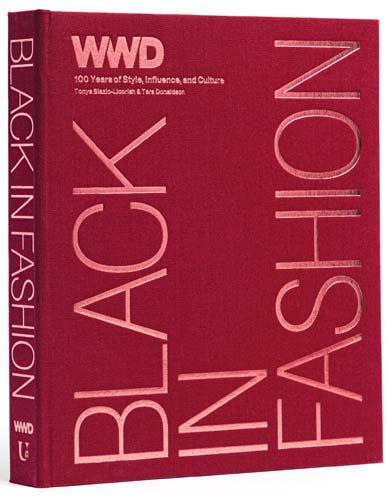
Nearly two decades in the making, FIT’s new academic building at 220 West 28th St. is slated to open in spring 2025. The 10-story, 100,000-plus-squarefoot structure, designed by the award-winning SHoP Architects, features 26 smart, energyefficient learning spaces; a doubleheight knitting lab; and a majestic, light-filled atrium.
Watch the event and others from the gathering at fitnyc.edu/alumniweekend


When Catherine Martin, the four-time Academy Award–winning costume designer, was researching fashions of the ’20s for Baz Luhrmann’s 2013 film adaptation of The Great Gatsby, she turned to FIT’s Special Collections and College Archives (SPARC).
SPARC, housed within the Gladys Marcus Library, holds more than 10,000 rare books and periodicals and 375 unique manuscript collections, which include original fashion sketches and designs. This gem within the SUNY system underwent a $3.6 million renovation in 2018 that nearly doubled its size to 6,100 square feet.
One of the treasures within the climatecontrolled storage shelves is Le Goût du Jour (1920), a small book of fashion plates that exists in only 13 libraries worldwide, according to WorldCat, a global database of library materials. Plate
The Museum at FIT’s permanent collection also has been a vital resource for films. Daniel DayLewis visited this archive to study gowns by Charles James and Balenciaga when preparing for his role as a mid-century British fashion designer in Phantom Thread (2017). A renowned method actor, DayLewis spent a year learning dressmaking until he could recreate a Balenciaga dress. When making The Incredibles (2004) and Up (2009), art directors from Pixar pored over The Museum at FIT’s textile collection for fabrics and patterns to adapt into character and set designs.
20 is a sketch of a young woman wearing a gold metallic dress with a large silver bow hanging below the dropped waist.
This sketch inspired a costume worn by Carey Mulligan portraying Daisy Buchanan, the film’s female protagonist. Martin, who worked with Prada to adapt much of the design house’s 2011 summer collection for the film, told House Beautiful magazine that her team did extensive research at the Costume Institute at The Metropolitan Museum of Art—and at FIT.
The film won the Academy Award for Best Costume Design.
When Emmy-nominated costume designers Lisa Padovani and John Dunn were conducting research for the HBO crime drama series Boardwalk Empire (2010–14), set during Prohibition, they consulted SPARC’s A. Beller & Company sketch collection, circa 1914–29. Beller, a noted cloak-and-suit firm, manufactured original fashions and licensed European styles for upscale department stores. Max Meyer, a buyer for Beller who commissioned these sketches, was the first chairman of FIT’s Board of Trustees and president of FIT until his death in 1953.
While reviewing the entire 9,000-piece Beller archive, the HBO team found a sketch for a 1917 Callot Soeurs ensemble and hat, which they recreated for actress Gretchen Mol. This is one of numerous costumes from the series inspired by SPARC discoveries.
SPARC also owns an archive of the exceedingly rare French publication Les modes: revue mensuelle illustrée des arts décoratifs appliqués à la femme. Page 38 of the January 1912 issue features a photo of a white with black pinstripe afternoon suit— which looks precisely like Kate Winslet’s costume in Titanic’s (1997) opening scene. Did the costume team find that reference at FIT? We don’t know. But it serves as another well-known example of the treasures that exist only a call-slip away. —Steven A. Bibb

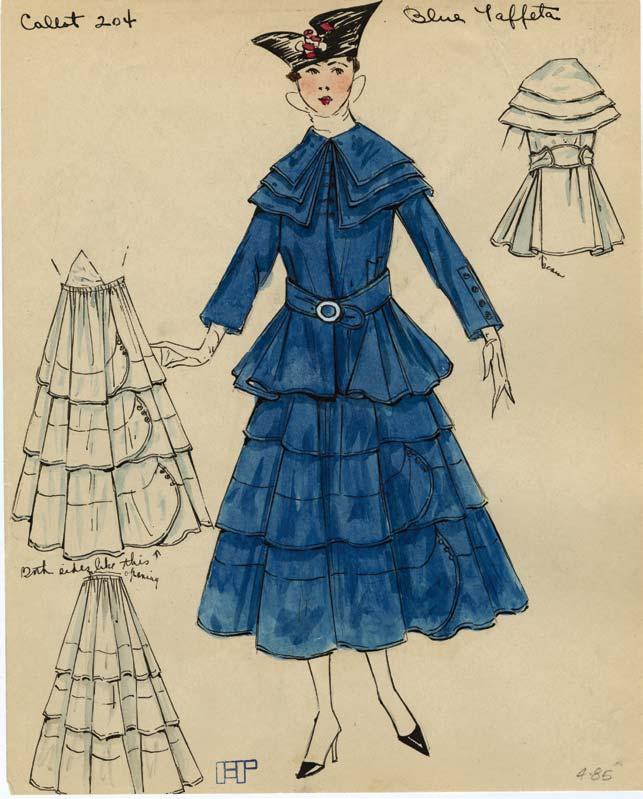
A rare publication that

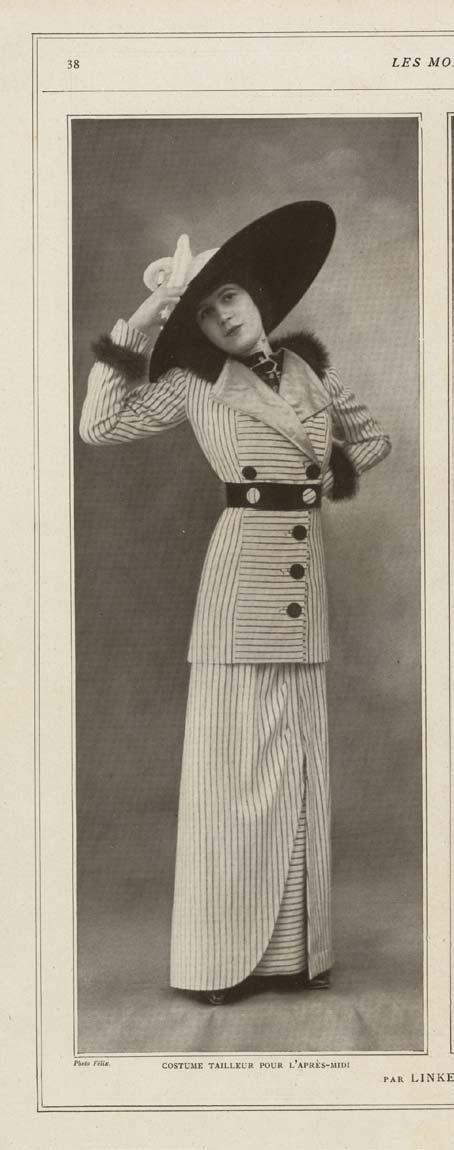





Awoman awakens in an empty mansion, not knowing who she is or what has happened to her. Before long, a faceless demon appears, and she must flee as she pieces together her past.
This is Fury, a first-person survival video game created as a thesis project by Adrian De Propertis and Giancarlo Viatella, two Animation, Interactive Media, and Game Design students who graduated in May. They developed the concept, wrote the story, drew storyboards, designed and built 3D characters and sets, animated everything, added lighting and textures, and coded it all, resulting in a playable demo. Dan Shefelman, chair of the program, says the yearlong project, which took hundreds of hours, reflects the students’ passion for playing video games: “A lot of them are very serious gamers.”
The video game industry is huge, by any measure. According to Circana, a market-research firm, video games grossed more than $57 billion in 2023, almost double the $30 billion in sales from 2016.—Jonathan Vatner
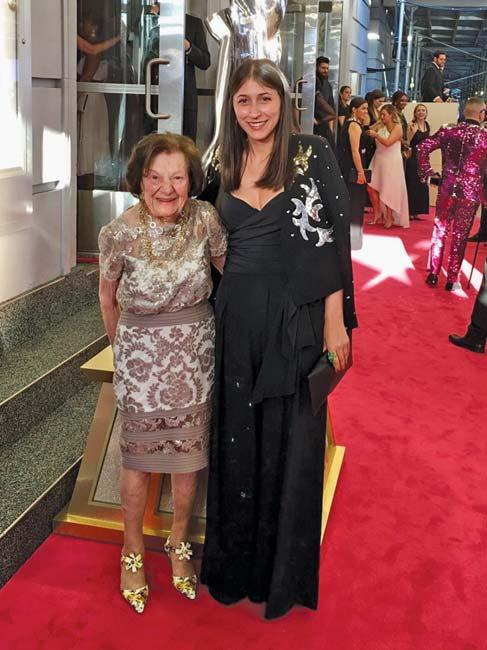
For 70 years, Ruth Finley’s weekly Fashion Calendar served as the scheduling bible for the American fashion industry. Now, thanks to the efforts of History of Art faculty member Natalie Nudell, this valuable resource has been reborn as an innovative digital research tool.
Launched in November 2023, the Fashion Calendar Research Database (FCRD) is the culmination of a three-year collaboration between Nudell, FIT’s School of Liberal Arts and Sciences, and the Gladys Marcus Library Special Collections team. Finley donated over 3,000 issues of the calendar, which ran from 1941 to 2014, to the college in 2015. All 39,000 pages have now been digitized and made fully searchable and are available open-source to download for free.
“Ruth was my mentor; we were really close,” says Nudell, who also wrote
and produced Calendar Girl (2022), a documentary about Finley (1920–2018).
Nudell faced a massive hurdle in how to effectively organize and present decades’ worth of data from the publication (famously printed on pink paper). After months of research, with support from Joseph Anderson, FIT’s digital initiatives librarian, her team discovered AI tools able to extract relevant information, allowing for a better search function. The project was supported by a $183,750 grant from the Council on Library and Information Resources (funded by the Mellon Foundation). Nudell unveiled the database last November at the Archiving Fashion Conference, hosted by FIT, which brought together librarians, researchers, and other professionals to discuss the future of fashion- and textile-related material in archives.
“Finley embodied the spirit of the American fashion industry during the 20th century,” Nudell says. She hopes that access to the database will inspire new research and academic study building upon Finley’s pioneering legacy and life’s work.
“There is something here for every single person to explore and utilize.”
Since the FCRD’s launch, it has had 78,000 page views and 5,300 unique visitors from around the world.
In September, Nudell published a book, In American Fashion about Finley and the calendar. “She wasn’t a gatekeeper,” Nudell says. “She allowed young designers to list their first events for free. She taught me the benefit


of sharing information and letting people use it in their own ways.” Alex Joseph
ABOVE: Alum Michael Kors first appeared in the calendar in August 1983.
BELOW: The database provides access to information about significant historical events, such as the debut showing of designer Stephen Burrows ’66, from the issue of Oct. 25, 1971.
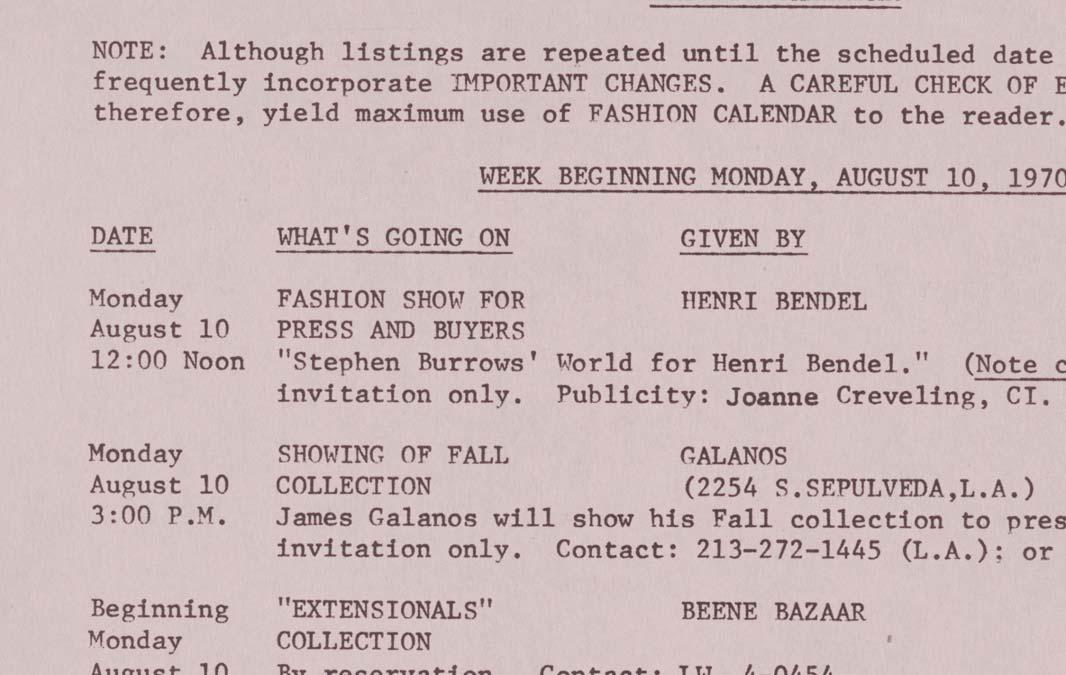

By Emil Wilbekin
On Nov. 28, 1994, when I was working as a junior editor at VIBE magazine, Mary J. Blige released her iconic album My Life. This collection of soulful and moody R&B tracks would be a cultural zeitgeist moment and a tipping point in my career as a writer.
I want to underscore the “junior” part of my editor title and experience. My actual title was associate editor, and heretofore, I had been editing “Next,” the new talent section of the magazine, breaking debut artists like Maxwell, Brandy, and Aaliyah. I had written smaller stories and one-page features about fashion, style, and music. But I had never written a long-form journalism profile, let alone a cover story.
But I was obsessed with Mary J. Blige—the Queen of Hip Hop Soul. For my peers and me, she was the voice of our generation. Her songs represented our love, loss, and angst, all riding classic soul music samples remixed over a hip-hop beat. Her music was the soundtrack to our lives—Mary is my generation’s Aretha Franklin and Beyoncé.
As a young, gay Black journalist, I had the privilege of writing about Mary for the premiere preview issue of VIBE in 1992, upon the release of her culture-shifting first album What’s the 411? on Uptown Records.
As a new diva, Mary was notoriously difficult, but we bonded during our interview; we understood each other: two young people starting out in their careers with grand ambitions and deep-seated imposter syndrome. Two years later, when I heard My Life, I knew I had to write that cover story.

“Mary [J. Blige] was the voice of our generation ... Her music was the soundtrack to our lives.”
So I begged my boss, Danyel Smith, then-music editor of VIBE, to let me write it. Mary’s music—and the audacious attitude of hip-hop—had given me the courage to ask for what I wanted. Finally, Danyel said yes! Mind you, My Life was one of the most anticipated albums of that year, and everyone was vying to interview Mary. It was a plum assignment, and it was mine.

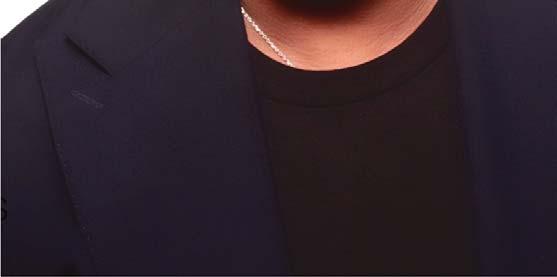
Just five years out of Columbia University’s journalism school, I was flying first class with Mary J. Blige to Los Angeles. She was doing tapings with MTV and BET, and I would shadow her and interview her between appearances, manicures, fittings, and posh meals at Crustaceans in Beverly Hills. I returned to New York with an intimate and deeply personal interview—she even cried. But … I had no idea what to do with it. I spiraled. After missing my deadline, I went into Danyel’s office and confessed that I was lost in the maze of paragraphs: evocative exchanges, the introduction, scenes, and secondary quotes. I was a hot mess.
Danyel, who was also my mentor, assigned me to work with our brilliant features editor, Rob Kenner. Rob sat with me, helping me organize my thoughts and create an outline and structure for the piece. He walked me through the process of writing a masterpiece cover story.
In the years that followed, I collaborated with Mary numerous times, writing two more cover stories and styling four covers and multiple fashion shoots at VIBE, editing Mary when she was guest editor of a special edition of ESSENCE, and even styling her “I Can Love You” video.
My debut cover story would also become the first of many. Most recently, I’ve written cover stories about Shonda Rhimes for Architectural Digest, Colman Domingo for Ebony, Taraji P. Henson for Town & Country, Keke Palmer and Sergio Hudson for ESSENCE, Ziwe Fumudoh for Grazia USA, and an elaborate portfolio on young, queer Black creatives for T: The New York Times Style Magazine
I’m so grateful to have had such a beautiful, teachable moment as a young journalist, for the mentorship of Danyel and Rob, and for the confidence and courageous spirit of Mary J. Blige to open doors to my satisfying career in journalism.
Emil Wilbekin is an assistant professor of Advertising and Marketing Communications with an emphasis on journalism.
You oversee the Fabrics Room for faculty and the Fabric Lab for students. What happens there?

Angelo Toteda , Fashion Buying and Merchandising ’85, coordinator, fabrics
If the faculty want to demonstrate how to make a garment, they come to the Fabrics Room for materials. I have all the fabrics measured and labeled, and I can give them yardage. Or they can borrow an illustrative garment from our collection so the students can copy from a prototype. We have illustrative sleeves, epaulets, pleats—you name it. Sometimes faculty want muslin of various grades or fabric for interfacings. Buttons, trims, notions—whatever they need.
The Fabric Lab has over 2,000 fabrics sorted by type: wools, cottons, lingerie, menswear. It’s primarily for inspiration and to give students an idea of what’s available for when they go sourcing. They can take up to 25 swatches per week; they put the swatches on the bottoms of their sketches when they create their line. There’s also buckles, beads, real and fake fur, leather. We can give them buttons, zippers, and all kinds of trims, too. We even have a machine that makes snaps.
Growing up, I had a cousin who worked for Bill Blass, so I’ve sold fabric since I was 11. I’ve worked here since 1985; I came in to apply for the job and the woman in charge said, “Can you identify these five fabrics?” And I said, “Do you want to know the fiber content and the weave?” Now all the kids call me The Fabric Man.
Q: FIT has a theater club?
A: That’s what everyone asks. Everyone at our school is so focused on their major, I think people don’t expect there to be a club that puts on large events. We get students involved in all different aspects of theater: working backstage, directing, costumes, props, and, of course, performing. We’ve been around since 2000. I’ve been musical director for all our shows, and I became president this past spring. I come from a theater background, and I got involved during my freshman year, in 2022—they were loud and out there at the club fair, wearing feather boas, and I enjoyed that. We were just coming back from Covid, so none of us knew how to put on a show at FIT. The last students who had done it had graduated. It’s not easy. FIT doesn’t have a program for performing arts, so it’s hard to find dedicated spaces to rehearse, and we don’t have a costume closet. We have to source from outside set companies, thrift clothing, buy items online, and more to produce a good quality show.
We recently put on The Addams Family and Into the Woods. We also do karaoke nights, and every October we host a Rocky Horror Picture Show watch party where we all dress up. Our next show, in December, is a comedy/drama about a mass wedding called Big Love. The women run away from the wedding because they don’t want to get married. It gets a little crazy at the end.

They lived together in Nagler Hall in 1974. And just like that …
In 1973, four young women studying Apparel Design met at FIT. Hailing from different corners of the U.S., Ellen Schraub Gang from Brooklyn, Joannie Krejci Grzesiak from Wisconsin, Colette HoffmanWong from Ohio, and Suzanne Bartolf Langford from Pennsylvania built a friendship that’s lasted half a century. Gang, Grzesiak, and Langford, skilled at cut and construction, were attending the one-year accelerated AAS program.

Gang and Grzesiak outside Nagler, spring 1974, with dress forms they purchased. “I draped my wedding gown on my dress form,” Gang says. “I named it Missfit.”
Wong, in the two-year program, joined their circle, bringing her artistic discernment. “She would say, ‘Change the line. White that out,’” Gang says. “It was all Wite-Out and Scotch tape then.” Throughout spring 1974, the group bonded during study sessions lasting till 4am in Nagler Hall’s seventh-floor lounge.

“We worked like dogs,” Gang says with a laugh, “but nobody else got us like we got each other.” Gang and Grzesiak chose the children’s wear specialization. “We were told that they were nicer people [in that segment of the industry], not as cutthroat,” Gang says. After graduation, she joined a children’s wear firm, Knit Waves, Inc., eventually becoming director of design and merchandising. Since 2001, she’s taught in FIT’s Internship Studies Department. Returning to Wisconsin, Grzesiak worked as a knitwear designer for several companies and later organized special events for her own, Touch of Whimsy. Langford founded her own
specialty shop, Suzanne & Co., in Pennsylvania. Wong designed intimate apparel for companies including Victoria’s Secret, and eventually served two terms as the chair of FIT’s Fashion Design program. Through it all, their friendship endured. “We’re like family,” Gang says. In an ongoing group text, they offer support and celebrate one another’s milestones. The quartet gathers almost every year. This past March, to celebrate the 50-year anniversary

Ashley Cast, International Trade and Marketing for the Fashion Industries ’17, marries compliance with sustainability at Coach
Growing up in Jacksonville, Florida, Ashley Cast had the same Christmas wish for four years: a new Coach bag. Now, as the green trade compliance manager at Tapestry, Coach’s parent company, she is working for this brand she has long cherished. Her journey with Tapestry began during the pandemic, when she moved back home to work at Tapestry’s Jacksonville office. As a global trade compliance analyst, she ensured the company followed the complex trade regulations between the nations producing products and the nations where they are sold.
“We are ice cream people. Joannie always made mint chocolate ice cream pies.”
of their friendship, they reunited at Nagler. The years had seen them through careers, weddings, births, and the weddings of their children (they have 11 between them—and 14 grandchildren).
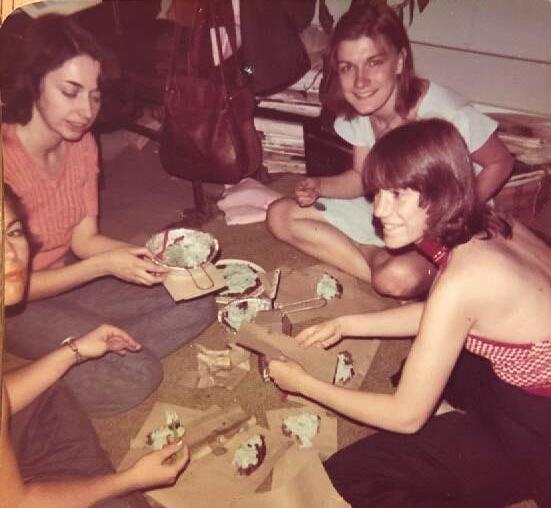
Often, the four collaborated on the brides’ and bridesmaids’ gowns; their families call them “the wedding fairies.”
As Wong puts it, “FIT didn’t just teach us fashion; it gave us each other.”
Alex Joseph
Cast soon took a similar job within Tapestry at Coachtopia, Coach’s sustainable sub-brand of accessories and ready-to-wear designed with a fun and edgy point of view. She immediately took to the brand’s mission to strive for a circular economy in fashion. Coachtopia makes goods from waste, sources materials responsibly, designs products that are easy to recycle, and takes products back for reuse.
“It’s not just, ‘How can we use recycled materials and nonvirgin materials?’” Cast says.

“It’s also ‘How can we produce product from waste—and then use the waste from producing it to make another product?’”
After working remotely in Florida for three years, she moved back to New York last year to join the Coachtopia team on site. There, she took the initiative and introduced more sustainable practices, like the company’s scrap usage program, which ensures the company does not leave any reusable materials on the cutting room floor. Higherups at the company took note and created her current position within a new department for Tapestry called Green Trade Compliance, which combines compliance with innovation in sustainability.
Cast advises on global regulations and policy, provides risk assessments, and creates processes to help the company follow all laws and guidelines. She also continues to help Tapestry reduce its environmental footprint.
“Sustainability factors into everything we do,” she says. “How can we provide opportunities for sustainable sourcing while remaining in compliance?”
For example, Coachtopia’s Loop collection is made from 98% recycled PET plastic and designed with a monomaterial approach: Creating a product from just one material makes it easier to recycle. Cast manages the testing of these supplies, which helps the company label and classify them for customs purposes and adherence to global regulations. She also works with mills and


factories to ensure the brand maintains certification at multiple levels to support the brand’s sustainability claims.
“Trade has always been a natural fit for me—I’m very detail-oriented,” she says. “But making a difference in the sustainability realm was something I didn’t imagine I’d have in my career. It helped me find a new passion for what I do.”
—Abi Ishola, Advertising and Marketing Communications ’04
Marc Hansen, cofounder and lead vocalist of the San Diego-based band Electric Mud, has always had a passion for music. Growing up on Staten Island, Hansen and his brother started the rock band with some friends, borrowing the name from the title of a Muddy Waters album.
After studying at FIT and a stint as a Navy SEAL, Hansen decided to devote his career to music. He and his brother resurrected Electric Mud, bringing on a guitarist they had met in the Navy, their cousin on bass, and a co-founder of the original band on guitar and keyboard. Their songs are high on energy, grit, and yearning and have serious road trip vibes. Hansen himself has the laid-back

demeanor of a rock star, yet he is also affable and attentive. His red hair often springs from a colorful bandana.
The Rolling Stones is their biggest influence, and in 2022, in hopes of being selected as an opening act, Electric Mud submitted their music and other information through the Hansens’ aunt, who is married to Keith Richards. They heard nothing for more than a year and assumed it wasn’t happening. Then, out of the blue, the Stones’ team reached out. The legendary band would be switching opening acts for every show on their 2024 Hackney Diamonds tour, and they wanted to add Electric Mud to the roster.
On May 7, in Glendale, Arizona, Electric Mud—which had never performed in a stadium—opened for the Stones in a 65,000-person venue. The band played to a crowd of fans and family, including friends from Staten Island. A video on Electric Mud’s Instagram shows the group playing in the colossal stadium to whoops and cheers, awash in cool blue light. Afterward, they got a boost in streams, merch sales, and media attention.
Following the performance— and a 40-piece mariachi band—Hansen watched the Stones from the pit with his family. “I was in heaven,” he says. Keith Richards, Mick Jagger, and Ronnie Wood played some of his favorite songs, including “She’s So Cold” and “Tumbling Dice.”
“We all just had this sparkle,”
he says. “We were doing this thing that was so epic to us, and we went up there and just did it. We were just elated. We were actually part of the show. That’s a dream come true.”
—Hannah Jansen
Dana Hansen, Fashion Business Management ’16, has made mentorship her career at TJX
What are your goals?”—a common question in the workplace. At the TJX Companies Inc., merchandise operations manager Dana Hansen’s goal is to ensure her teammates achieve theirs.
She manages 15 merchandise assistants, five of whom began as interns from FIT. Hansen and her team cover business in Canada and Australia for TJX, which operates TJ Maxx and other major brands like Marshalls. She’s responsible for the onboarding, training, and development of her assistants, who act as liaisons between vendors and TJX buyers.
Hansen makes it clear she’s there to support her team. “I remind them that I’m an advocate for them,” she says. In challenging situations, she communicates with empathy. “If someone is having a tricky issue, I reassure them that we can work through it together.”
She’s also taken her office’s interns under her wing. Whether an intern reports to Hansen or not, she guides them through onboarding and store visits. She also helps them prepare their final presentations, during which they recap the work they’ve done or even pitch new ideas.
Hansen herself started as an intern at TJX in her senior year at FIT. She was “dead set” on becoming a fashion buyer or planner, so she got a job as a TJX merchandise assistant. But she found she preferred training others. A coworker took notice and offered her a supervisory role in merchandise operations.
As a mentor and manager, she finds that understanding others’ perspectives is critical, and she caters to different learning styles. For example, she once had trouble building trust with a buyer. Hansen realized this coworker was very data-driven, so she always made sure to present any new ideas with plenty of proof points.
Hansen’s also not afraid to be candid. “You’re showing teammates you want to help them develop,” she says. “I would be doing them a disservice by not giving feedback.” While it can be tough, she offers constructive criticism promptly rather than putting it off, which she says could lead to colleagues feeling confused or blindsided once the moment has passed.
In addition to her job at TJX, Hansen has taken on a new role: professor. This spring, she is teaching FIT’s Senior Internship: Career




Planning class, focusing on essentials like resume building, interviewing, and networking, plus insights from her job.
“It’s the best part of my day to know that I helped with someone’s career,” she says.
—Vanessa Machir





When Mardi Meshejian took up knifemaking nearly 30 years ago, he didn’t set out to create art. But don’t tell that to the connoisseurs who vie to own one of his masterpieces. “Making artsy knives never crossed my mind—but that’s what happened,” he says with a laugh. “I guess I approach knife-making from an artist’s perspective. I see knives as my medium.”
Meshejian’s parents were jewelers in Queens, and he had been making pieces since he was 10. After studying Jewelry Design at FIT, he joined the family business. “It was the natural next step,” he says. “But creatively? It just wasn’t coming together for me.”
In 1995, Meshejian found the creative satisfaction he was yearning for at the American Bladesmith Society school in Arkansas. He took introductory bladesmithing and a class on folding knives,
Damascus steel endows Meshejian’s knives with both sharpness and beauty.









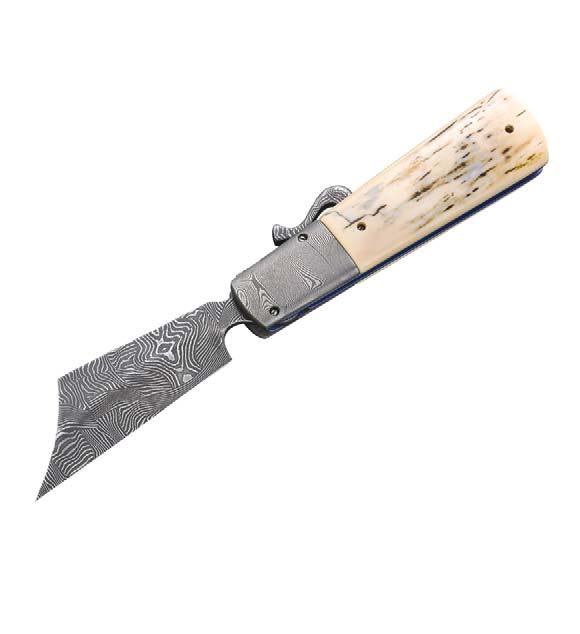







of ornate beauty and an artist’s impulse to defy convention. His knives convey the dignity of an ancient craft while also being jaw-droppingly original. “As a person, I tend to push limits. As a knifemaker, I push the limits too,” he says.
Among his peers, Meshejian is deemed a true innovator—for his designs and methods and for his chosen materials: the metals, the rare woods like bloodwood and ebony, the fossilized bone. His sculpturally sophisticated knives, which have been exhibited at the Canton (Ohio) Museum of Art, the Historic Arkansas Museum in Little Rock, and the Metal Museum in Memphis, are almost always surprising, but never at the expense of functionality.
Although many of his pieces are purchased by enthusiasts who display them as art, Meshejian especially enjoys making pocket and kitchen knives that find their way into daily use. Whether purchased for use or display, a handmade knife is an investment. Meshejian’s kitchen knives range from $250 for a paring knife to $1,200 for a full-size chef knife, while his art knives range from $950 to upwards of $5,000.
Bladesmithing, Meshejian explains, is bound by tradition: To become a Master Smith, one must craft knives of

exceptional quality that conform to very specific structures, very classic designs. But his designs incorporate abstract motifs, fluid curves, and exquisite hues and textures, and so he has never sought that rank. He concocts his own Damascus steel by carefully heating and hammering and fusing and folding together layers and layers of different types of steel until the metal possesses the fine molecular structure required for otherworldly sharpness. Forging the steel takes him a week; crafting the knife takes another.
“As I work, I am improvising and designing as I go,” he says. “It’s collaborative between me and the materials. I feel my way through, following the materials until the knife reveals what it wants to be.”
—Kim Masibay




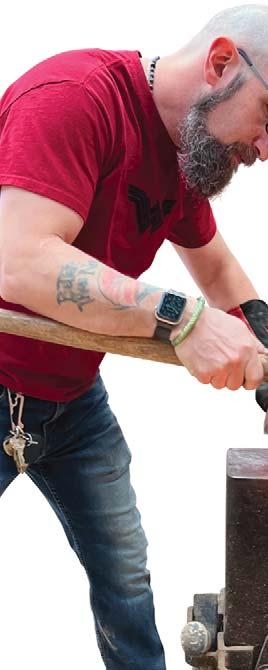








In 1996,
Emma Kadar-Penner’s groovy gift shop has something for everyone
Everybody in New York is looking for something,” the author Donald E. Westlake once wrote. Chances are, you can find it at Friends NYC, a gift emporium in Bushwick, co-founded by Emma Kadar-Penner, Fashion and Textile Studies: History, Theory, Museum Practice MA ’14. A lighter emblazoned with a cigar-chomping Tony Soprano. A rug that looks like a stick of butter. Hair clips in the shape of pugs and prescription bottles. Building this “weird and wonderful” array, as Kadar-Penner calls it, is an impressive curatorial feat. The store’s selection is varied yet personal, unique yet accessible, with many items under $50.
Kadar-Penner’s interest in fashion curation brought her to FIT; while finishing her degree, she worked as a collections management assistant with The
Metropolitan Museum of Art’s Costume Institute.
She also scored a part-time gig at her friend Mary Meyer’s clothing business, assisting with design and administration. Meyer eventually expanded, renting the Bushwick space to sell her designs plus vintage items. In 2014, Kadar-Penner made Friends her full-time job. Originally called Friends Vintage, the store became Friends NYC after Kadar-Penner and Meyer added candles, cards, and other gift items. Customers loved the new selection. “Part of why we’re successful is because we’ve been in the neighborhood for so long. We listen to what our customers want, and they continue to support us,” Kadar-Penner says.
Notable customers have included Katie Holmes, Malia Obama, and Zosia Mamet of Girls fame. And what do customers want most? A candle in the shape of a baguette, a best seller they’ve carried for about nine years that has gotten press in Apartment Therapy and Architectural Digest

Their wares come from many different sources.
Kadar-Penner and Meyer create moodboards with their team, do extensive research, and go on buying trips. Kadar-Penner’s been everywhere from big trade shows to “gift shows in the middle of nowhere,” from Mexico City to Pigeon Forge, Tennessee, in search of fantastic and far-out pieces. Some items, like the Tony Soprano lighter, Friends NYC produces.

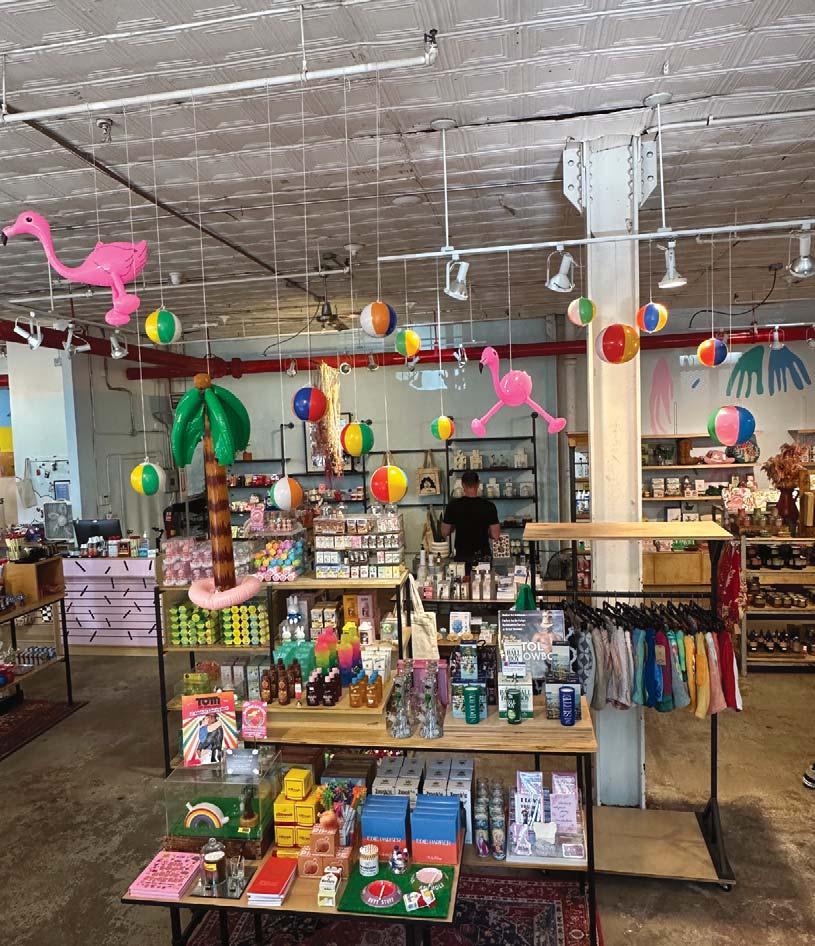
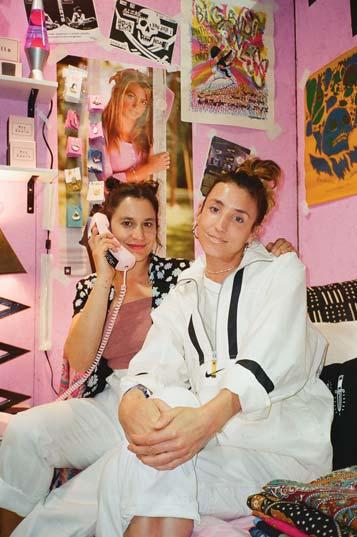
“We personally like the ’90s and aughts, so nostalgia is something we do really well,” she says, “and it works with what the customers want.”
The website is proof. Shop by “Mood,” and the first option that comes up is “Y2K,” along
LEFT:
with of-the-moment categories like “Barbiecore.”
And they’re expanding their selection even further. They’ve been adding smoking accessories, “blind boxes” of toys, and bath and body products—“something Mary and I are obsessed with,” she says— from buzzy brands like Edie Parker, Squishmallows, and Vacation.
Working with friends is notoriously challenging, but starting part-time helped Kadar-Penner ease into the coworker relationship. “It’s just been a pleasure and has brought us closer together,” she says. Friends indeed.
—Vanessa Machir



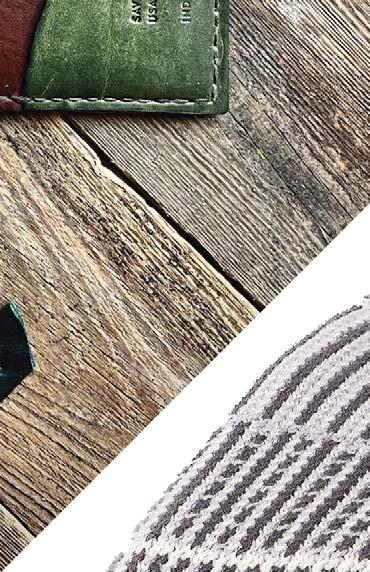



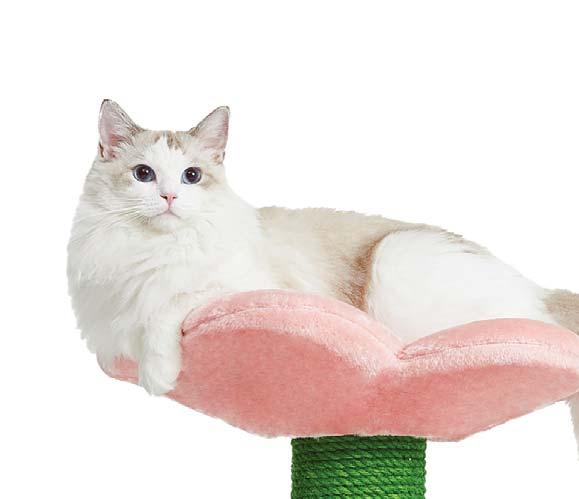















FIT has long been a laboratory and breeding ground for creative entrepreneurs, many of whom design, manufacture, and sell beautiful and useful products. This year, the Hue team selected six handcrafted, sustainable products, created by FIT alums, that we think will make fabulous holiday gifts.





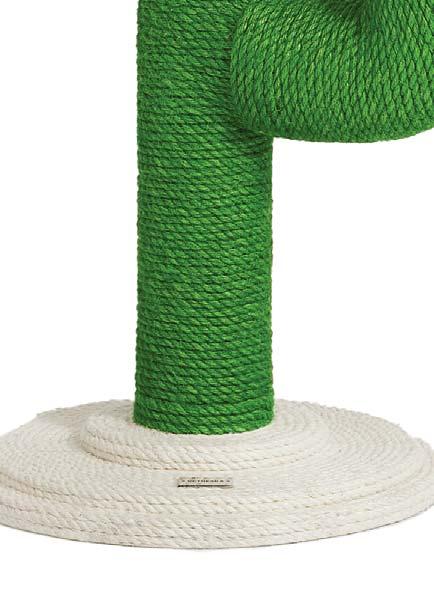





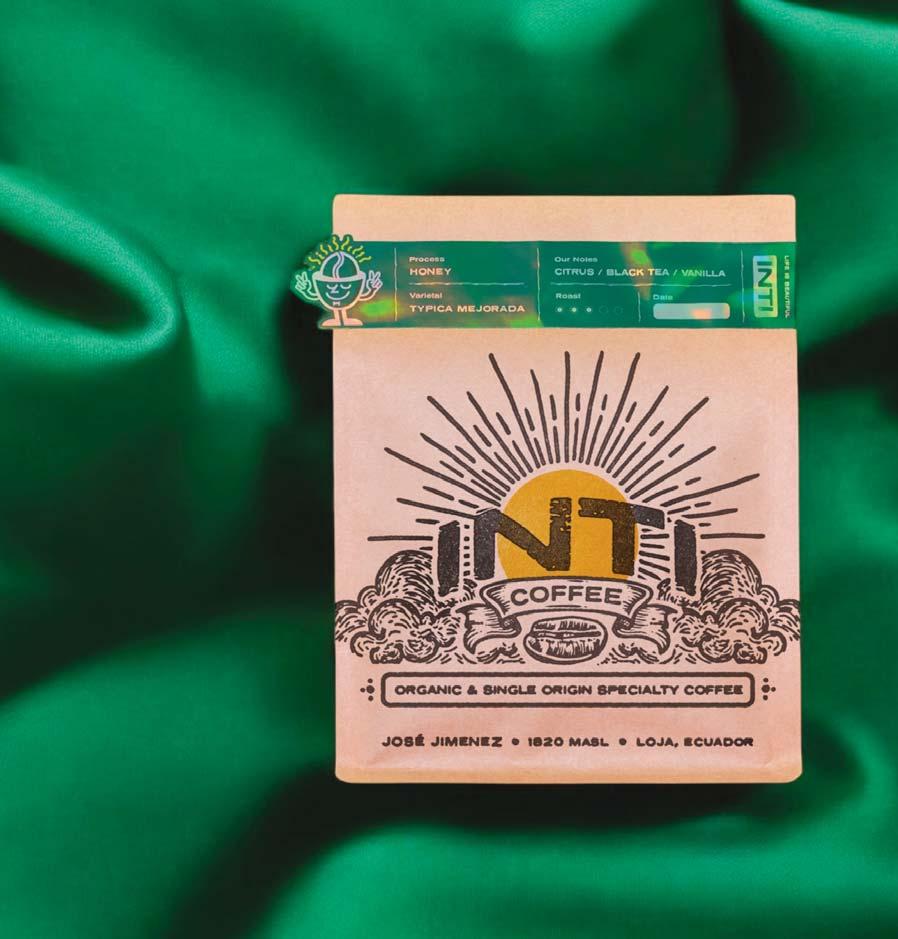

PREPARATION FOR THE NEXT LIFE
1. 1974 LEATHER
OLIVER WALLET
$138, 1974leather.com
Beth Dryden, Display and Exhibit Design ’00
This simple, striking card wallet features contrasting colors of natural leather and an elegant wave pattern on the inside. The wallet contains six slots for cards, including two larger pockets for cash. Dryden handcrafts each one to order in her Atlanta studio.
BLOOMING CACTUS CAT TREE
$180, vetreskanyc.com
Donald Kng, Fashion Merchandising Management ’15, and Nico Li, Advertising and Marketing Communications ’15
Forbes 30 Under 30 Asia honorees Kng and Li met at FIT and founded Vetreska, a source of adorable and stylish pet decor stocked by MoMA Design Store and Le Bon Marché in Paris. This cactus-shape jute cat tree includes a flower pedestal where your favorite feline(s) can curl up for an elevated nap.
3. MADE*HERE NEW YORK
COTTON THROW BLANKET
$175, madeherenewyork.com
Karyn Scherer Villante, Production Management: Textiles ’83

These soft cotton blankets, crafted in small factories in the Bronx and on Long Island, feature creative knit structures and gorgeous patterns. They’re available through West Elm, but order through Villante’s website and she will pack the box herself and even enclose a personalized card upon request.
4. INTI COFFEE
ORGANIC COFFEE SUBSCRIPTION
$20/month, inticoffeeusa.com
Judy Greco, International Trade and Marketing ’17
During a family event in Ecuador, Greco and her boyfriend met a third-generation coffee farmer whose family-centered ethos and sustainable practices inspired them. Greco’s collaborative business model seeks to move “beyond fair trade” by partnering with the farmer and connecting customers with the source of their beloved brew. Together they sell their award-winning medium-roast beans in compostable bags directly to consumers.
5. ZAAFAR
PRECIOUS GEMSTONES NECKLACE
$1,048, zaafar.com
Saadia Zafar, International Trade and Marketing ’03
Zafar received a patent for the process of blending textile and jewelry techniques to create her “artwear”—heirloom-quality statement pieces with an appealing density and natural gravitas. Each creation is hand-embroidered by a Pakistani artisan.
6. APOTHEKE
SCENT TOWER
$175, apothekeco.com
Chrissy Fichtl, Fashion Buying and Merchandising ’97
Simply pour one of Apotheke’s fragrance oils into this high-tech electric diffuser, and it emits a fine mist that bathes a room in long-lasting scent. Fragrance options, blended in Brooklyn and sold separately, include canvas, white vetiver, hinoki lavender, and charcoal.
Want to be considered for next year’s gift spotlight? Email us at hue@fitnyc.edu.

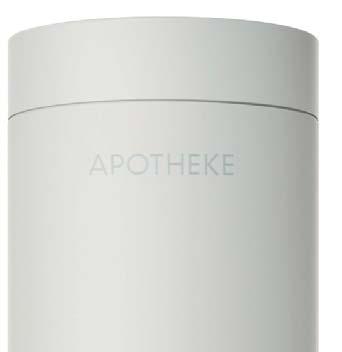
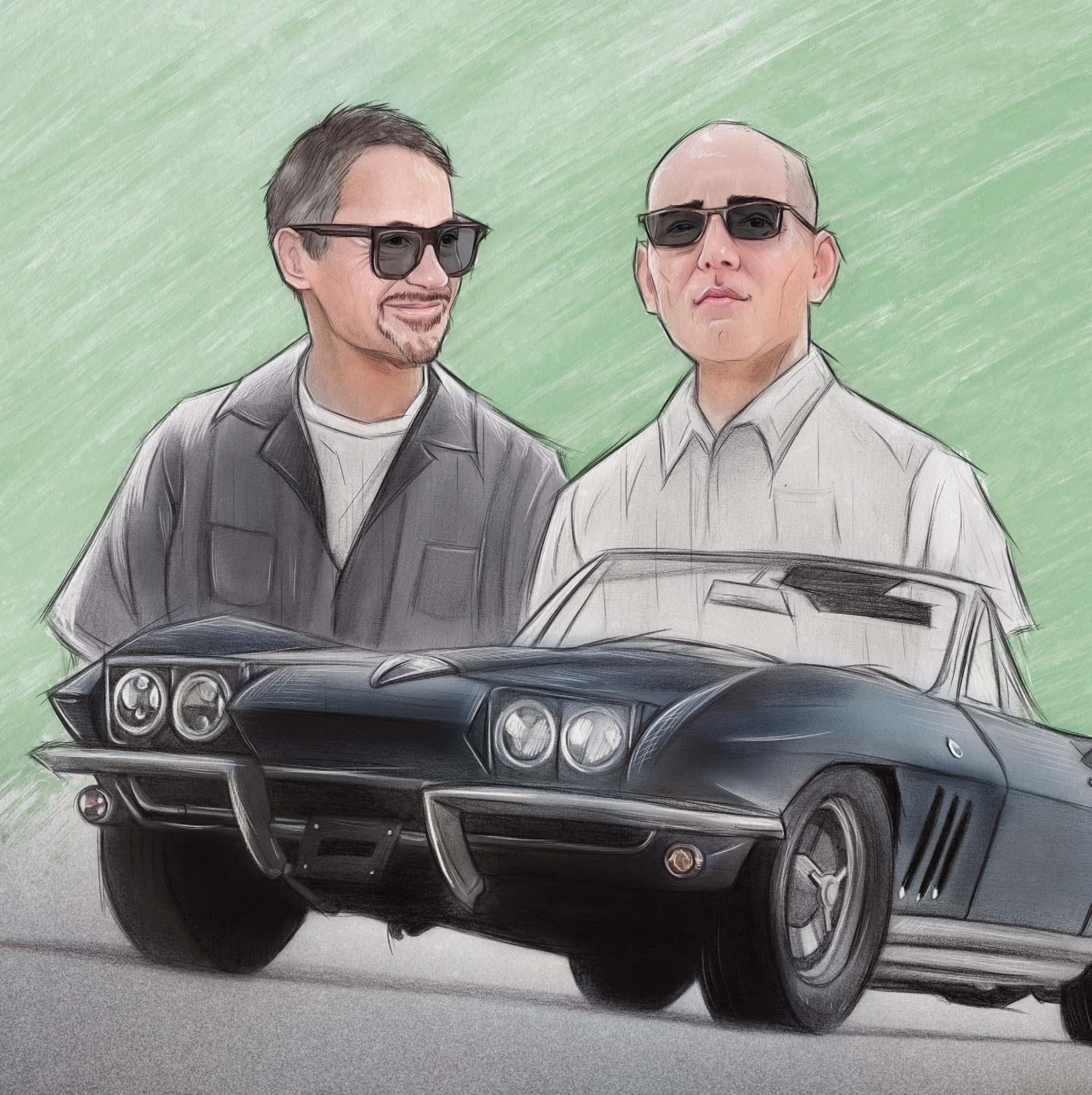

Chris Mazzilli, Menswear ’85
My father worked at a Chevrolet dealership. I could name every car on the road when I was five. In high school, cars represented freedom—it was a big thing. But I really love the design aspect. Around 50 or 60 years ago, they were making the coolest, most stunning cars. These things were works of art.
I started a little business in high school: buying cars in the $50 to $200 range from the pennysaver, fixing them up, and selling them. I began collecting cars about 20 years ago, and founded my current business, Dream Car Restorations/CMC Motors, on Long Island about 10 years ago.
In the summer of 2020, Robert Downey Jr. approached me because he wanted to modify his vintage cars in an eco-friendly way and give them away as part of a paid sweepstakes benefiting the FootPrint Coalition [which promotes technology solutions for a greener future; Downey is a co-founder].
I suggested doing a TV series to support the sweepstakes, and that’s how Downey’s Dream Cars came together. I’m the co-host of the show, and in each episode we focus on modifying one car from Downey’s collection in a sustainable way. We customized a 1965 Corvette with mushroom leather that feels like regular leather. For a 1969 Mercedes—his mom’s car— we put in a suede-like interior made from recycled plastic bottles. Either I take the car to my shop for modifications, or I connect him with another expert who can help with the specific modifications we’re looking for. It was challenging but very rewarding to modify these unique, classic vehicles and make them eco-friendly.
Hot-rodding has always been about choice. If there’s a way to make a car more sustainable and get rid of waste, why not do that?
—As told to Vanessa Machir
Mazzilli is co-owner of Gotham Comedy Club and executive producer and co-host of Downey’s Dream Cars, which won a 2024 Daytime Emmy in the Lifestyle Program category.

By Claire Messud (2006)
One of the protagonists of this novel, a moving post-9/11 group portrait, comes to the college to research a (never-tobe-completed) study of children’s wear.
The Magazine of the Fashion Institute of Technology
HUE is published three times a year by the Division of Communications and External Relations
227 West 27th Street, Room B905 New York, NY 10001-5992 (212) 217-4700
State University of New York
ALEX JOSEPH MA ’15
Chief Storyteller
JONATHAN VATNER
Managing Editor
SMILJANA PEROS
Photography Coordinator
STEVEN A. BIBB Photo Research
ALEXANDER ISLEY INC. Art Direction and Design
GOODFOLK AGENCY Web Design
HUE ONLINE hue.fitnyc.edu EMAIL hue@fitnyc.edu
Like the FIT Alumni page on Facebook and follow @FITAlumni on Twitter and Instagram. Use #FITAlumni when posting.
Email the Office of Alumni Engagement and Giving at alumnirelations@fitnyc.edu and let us know what you’ve been up to.
Also check out FIT’s official social media accounts:
FashionInstituteofTechnology FITNYC FIT

Fashion Institute of Technology
Please
